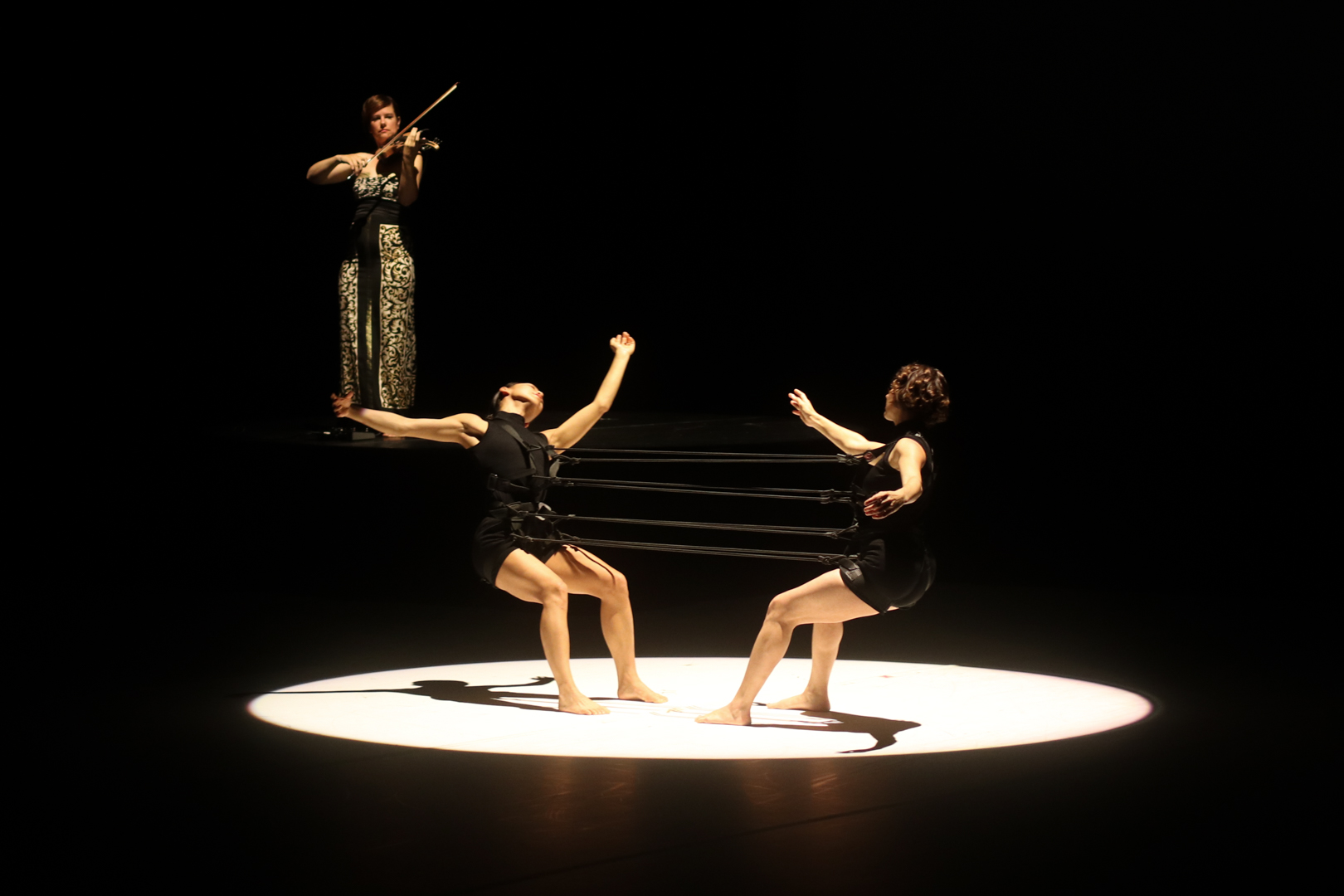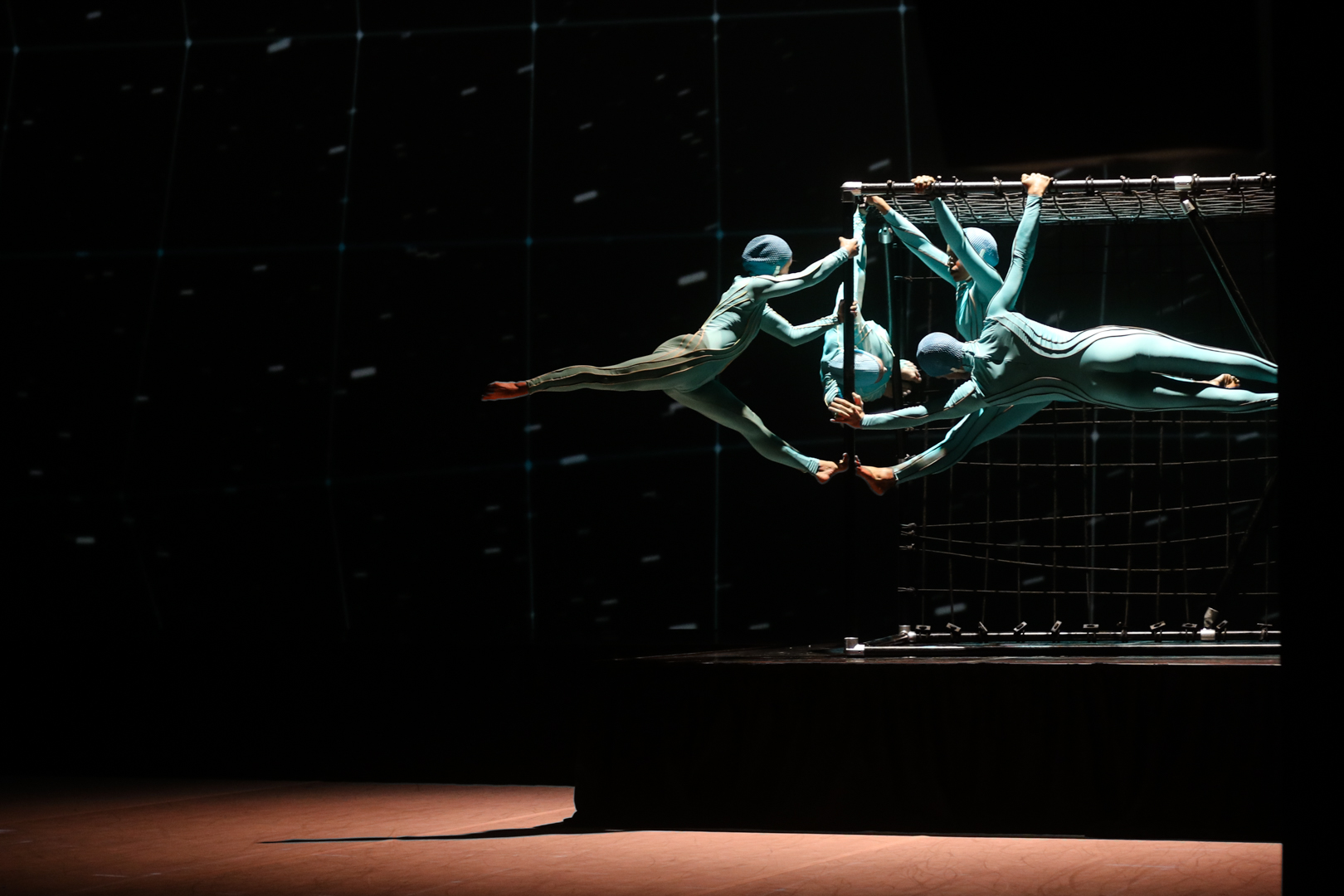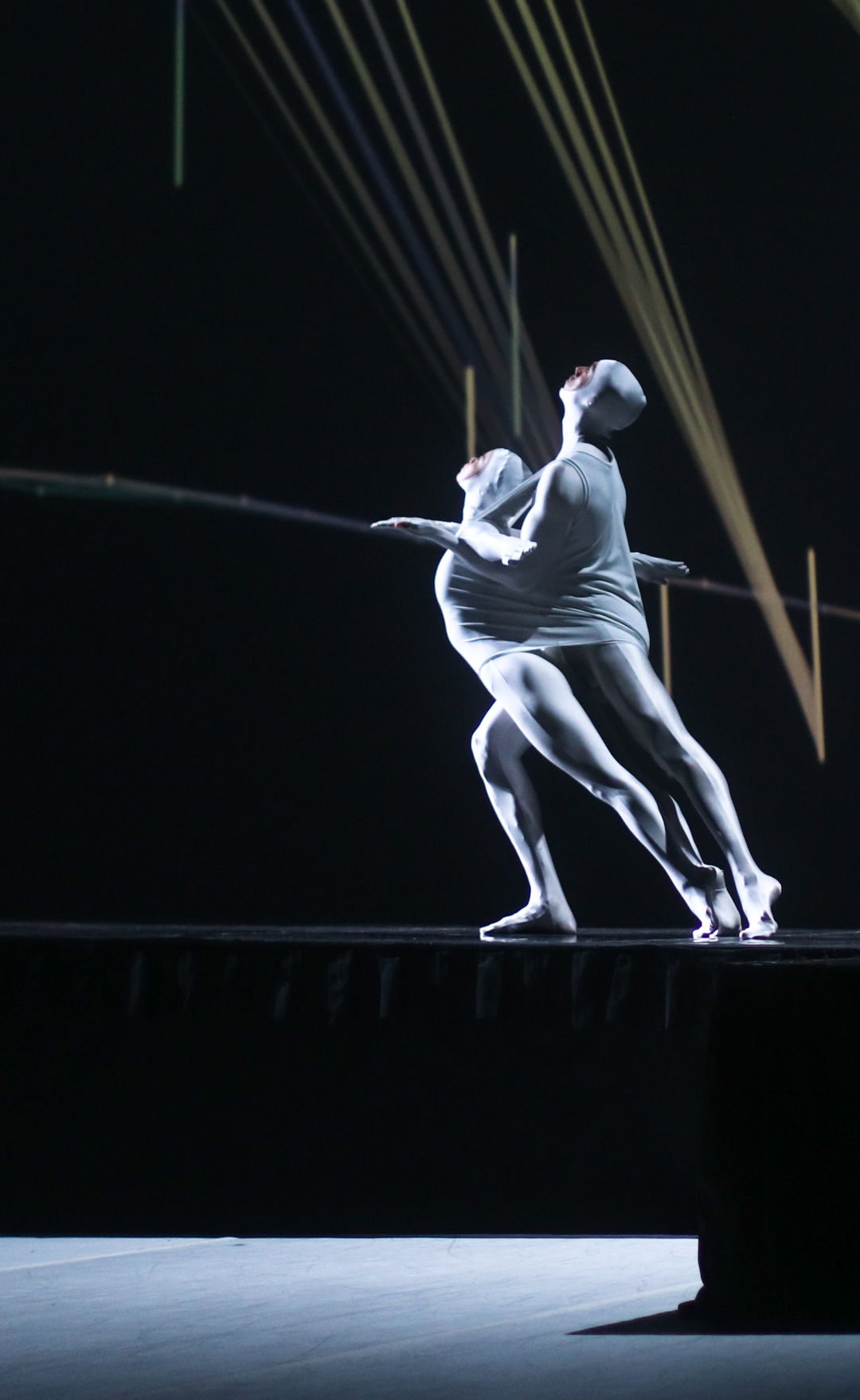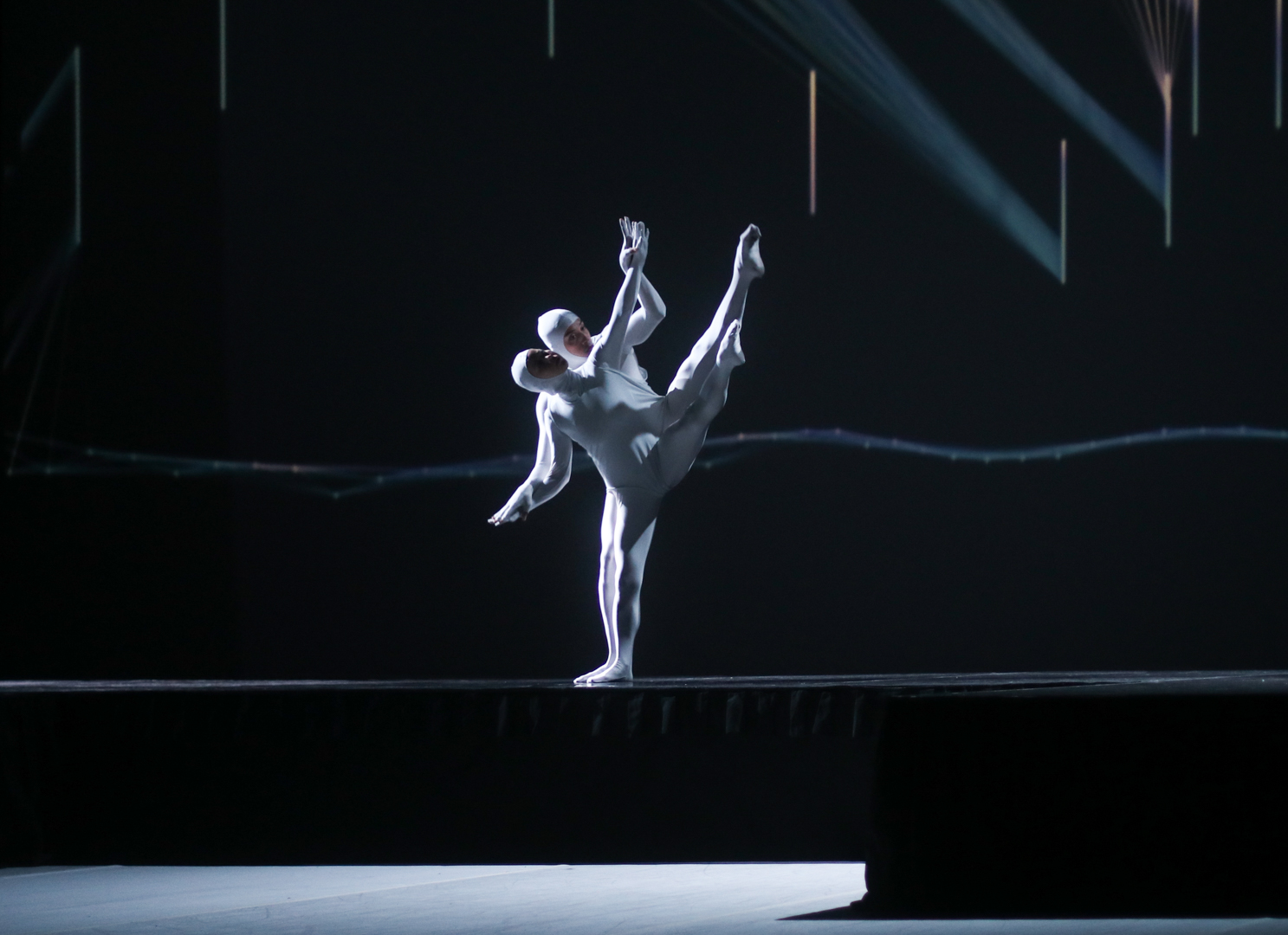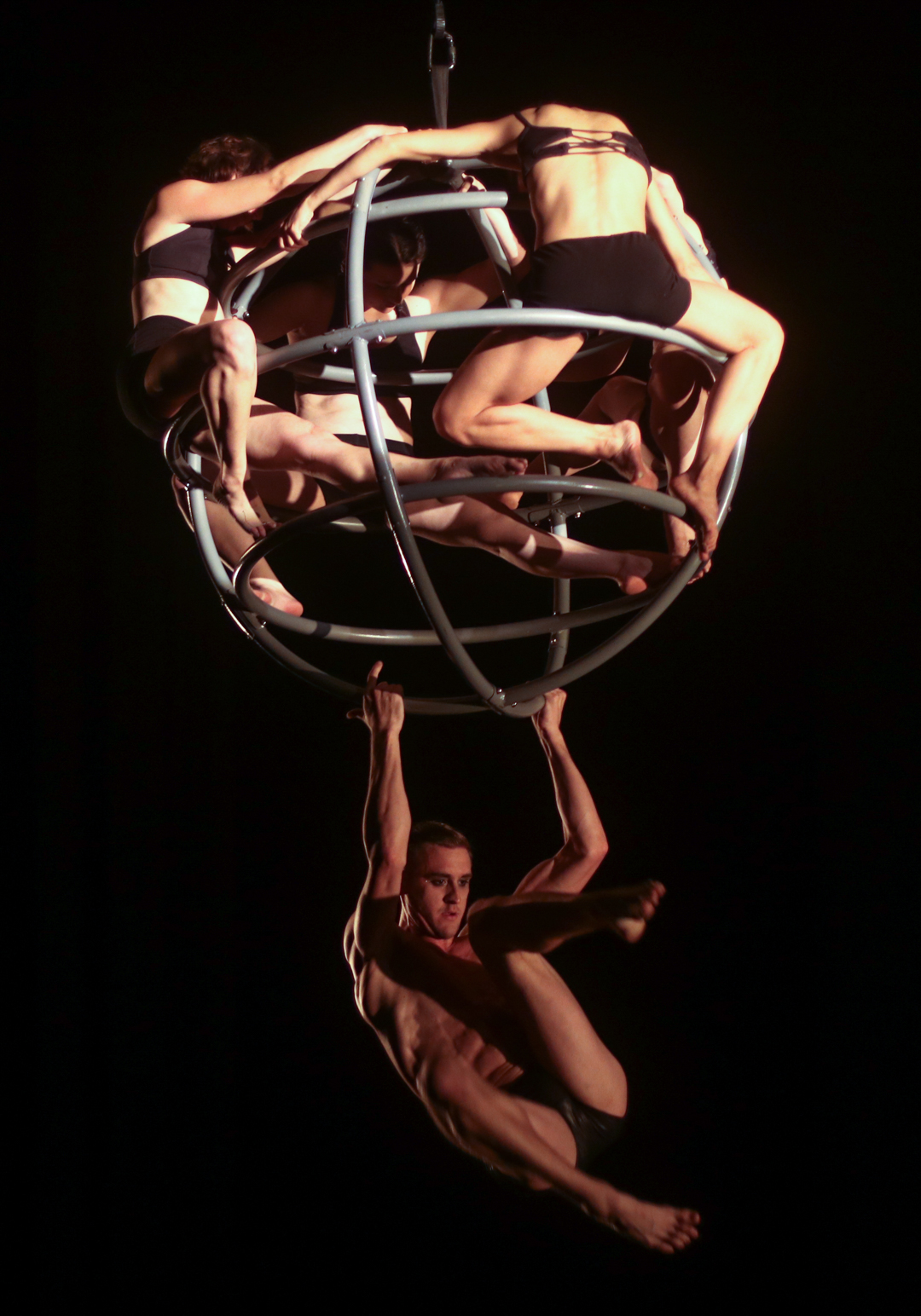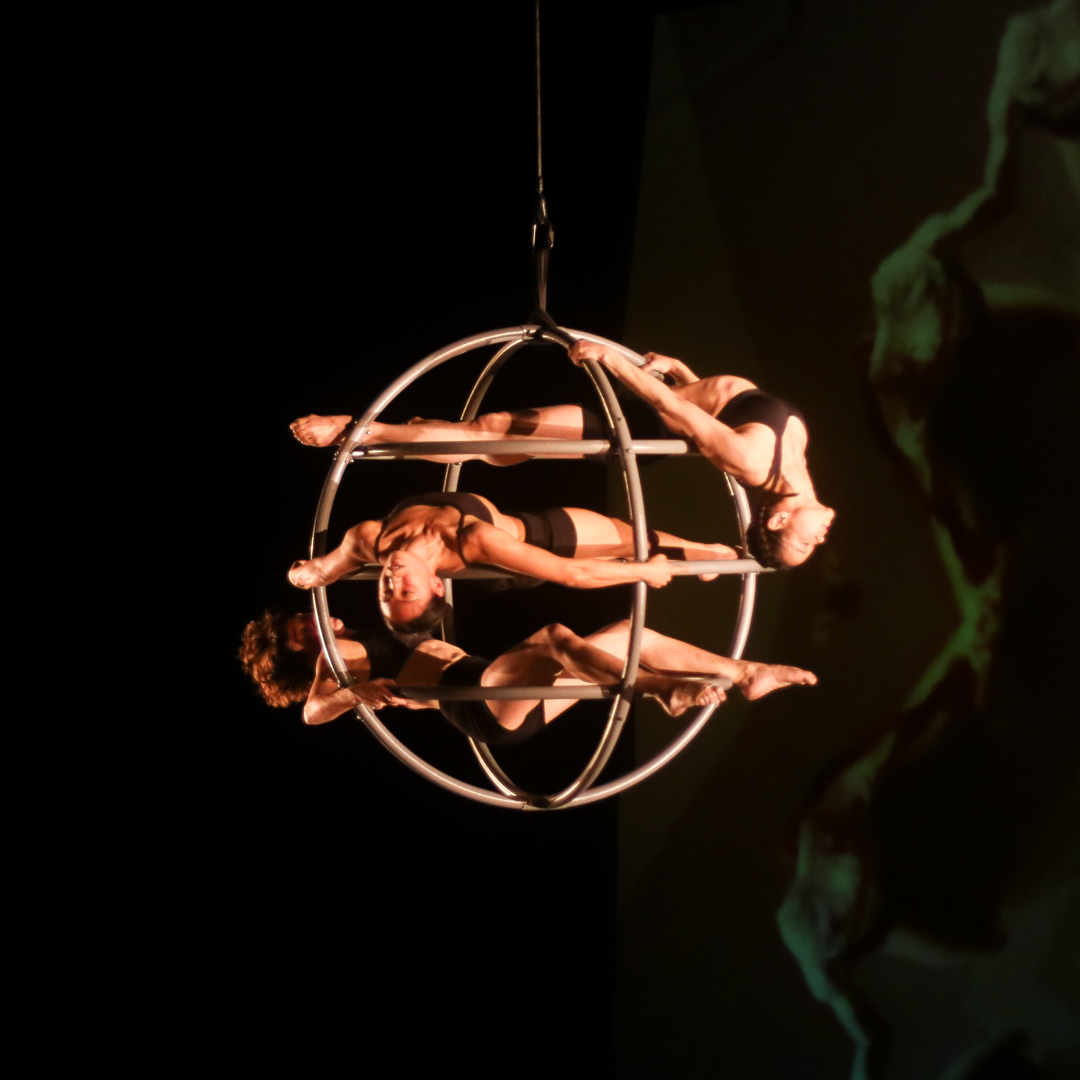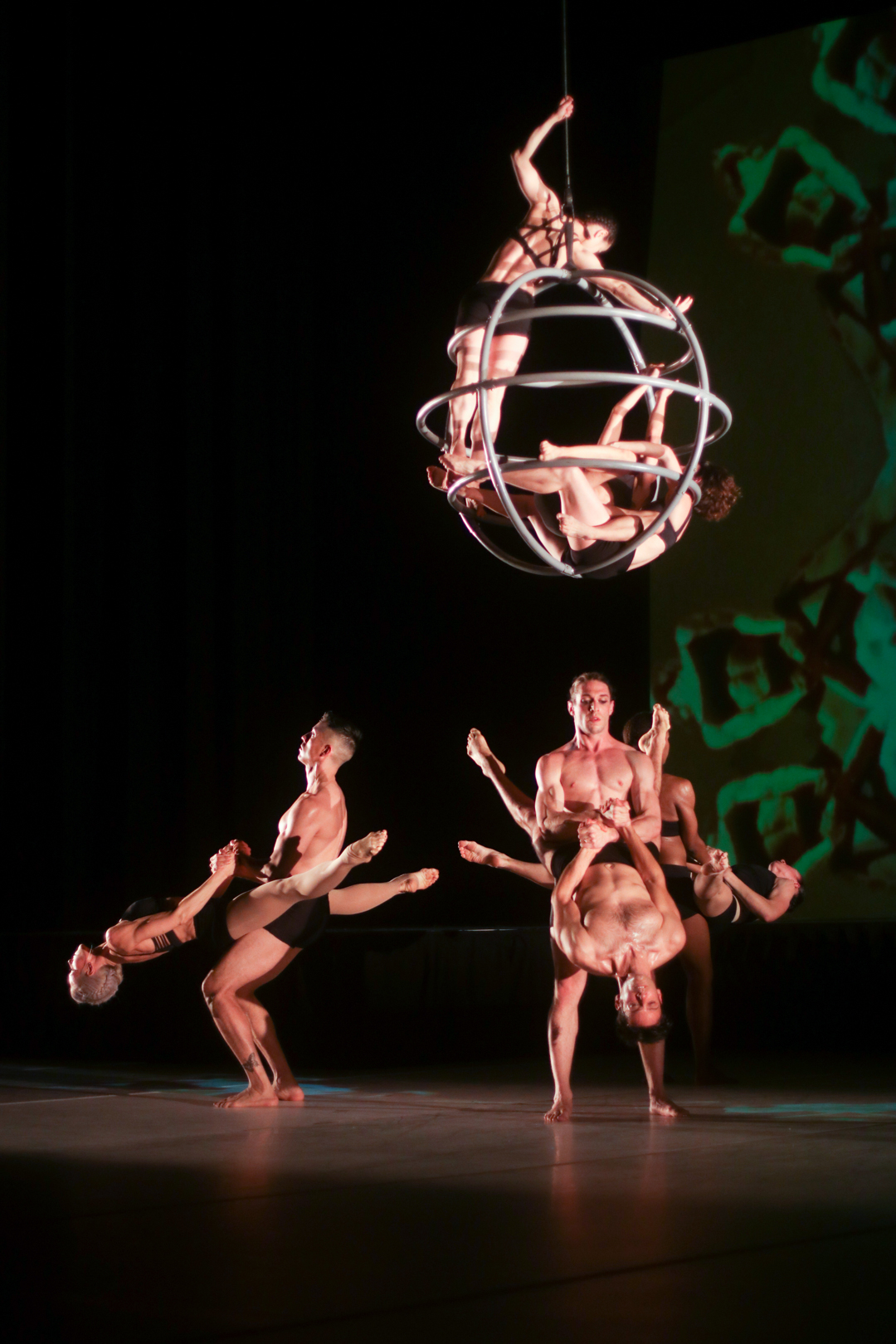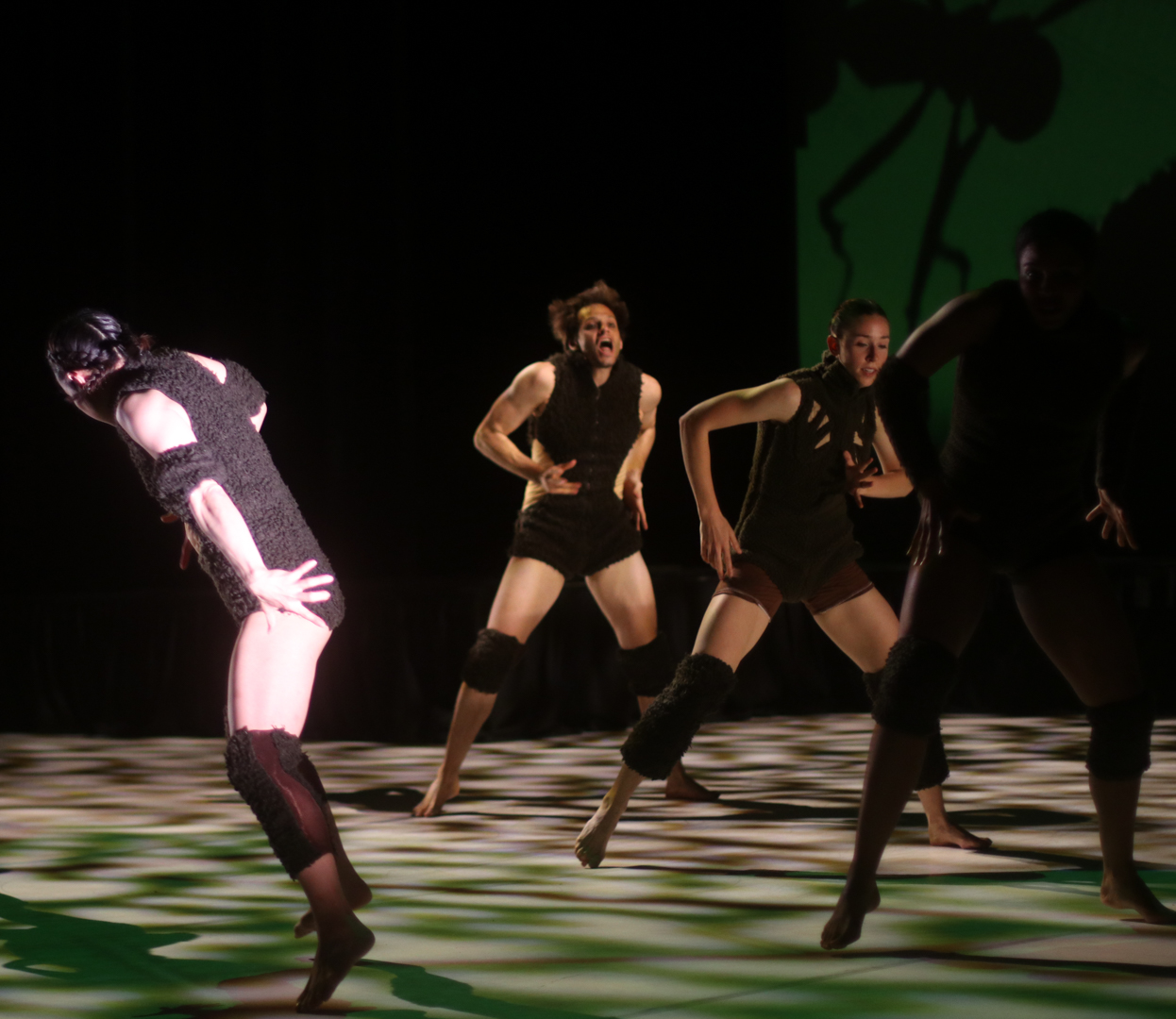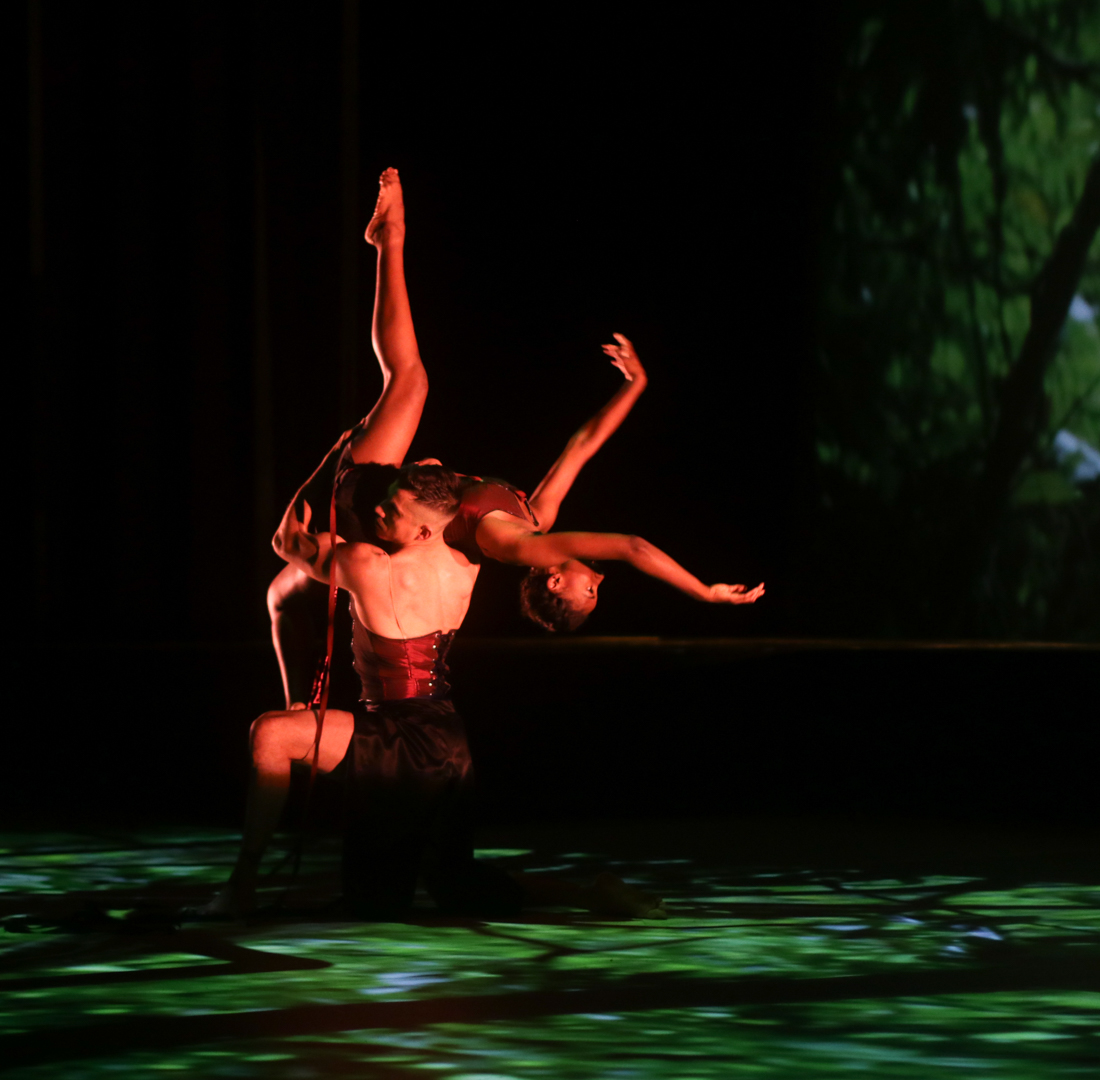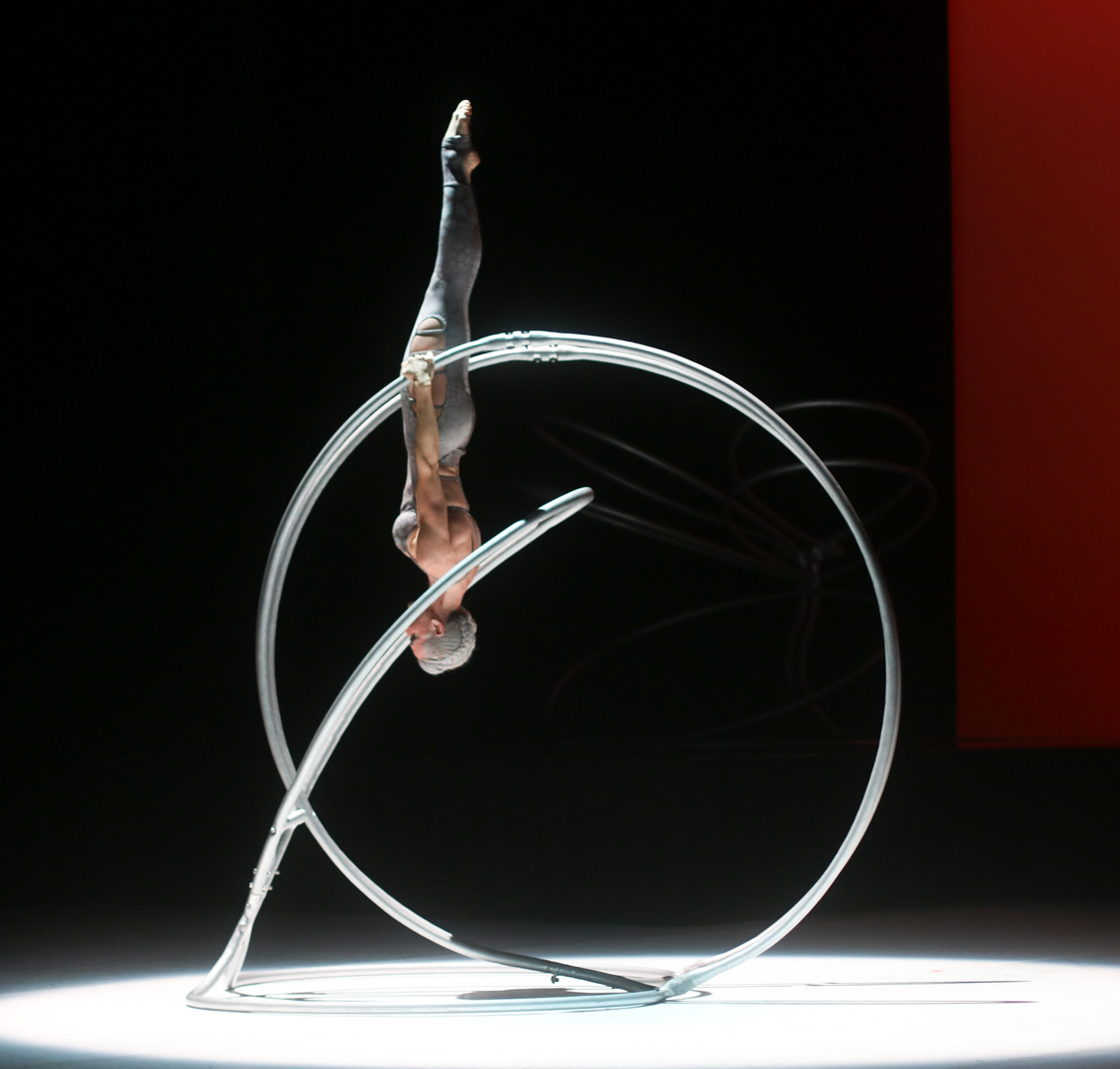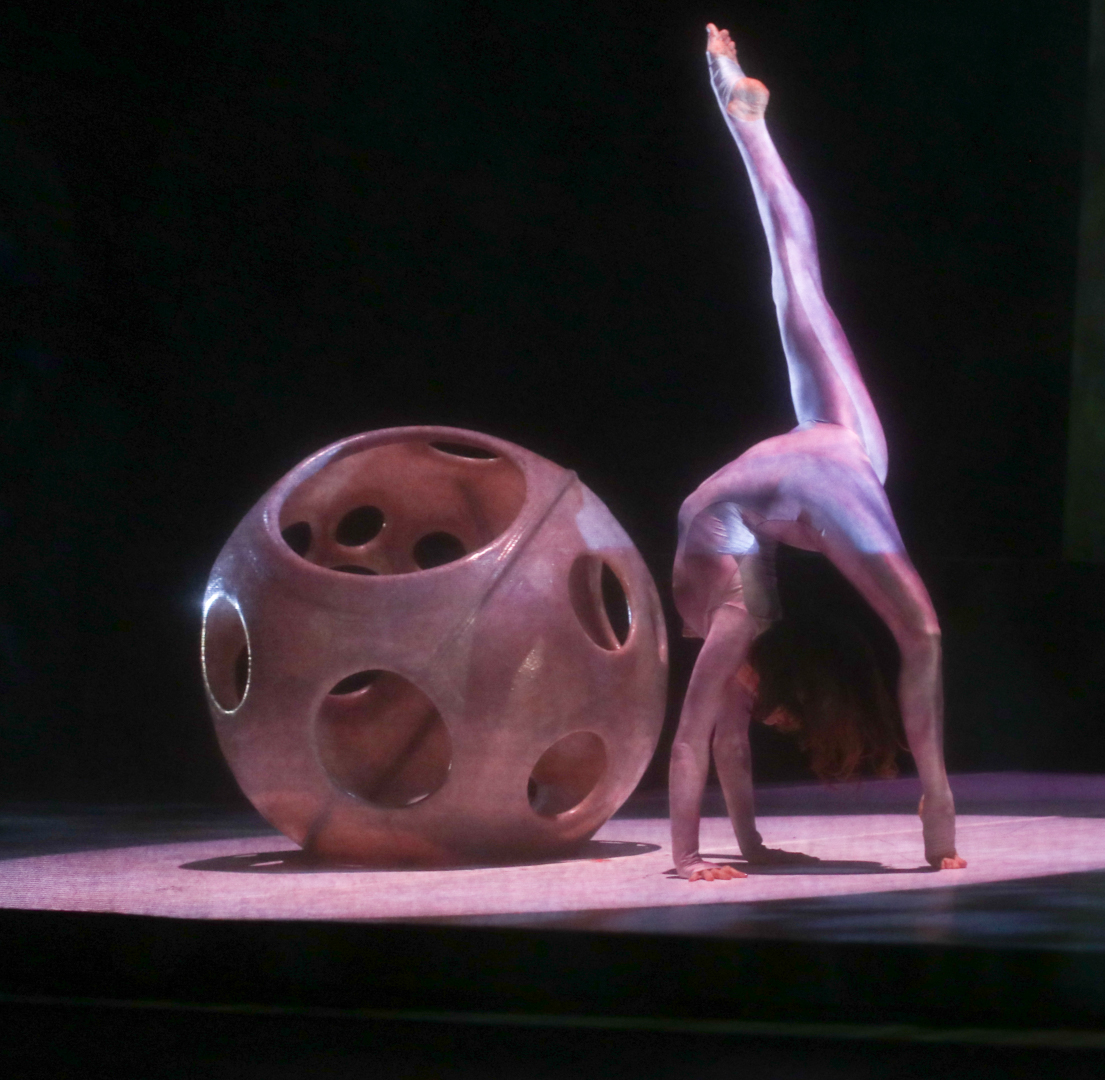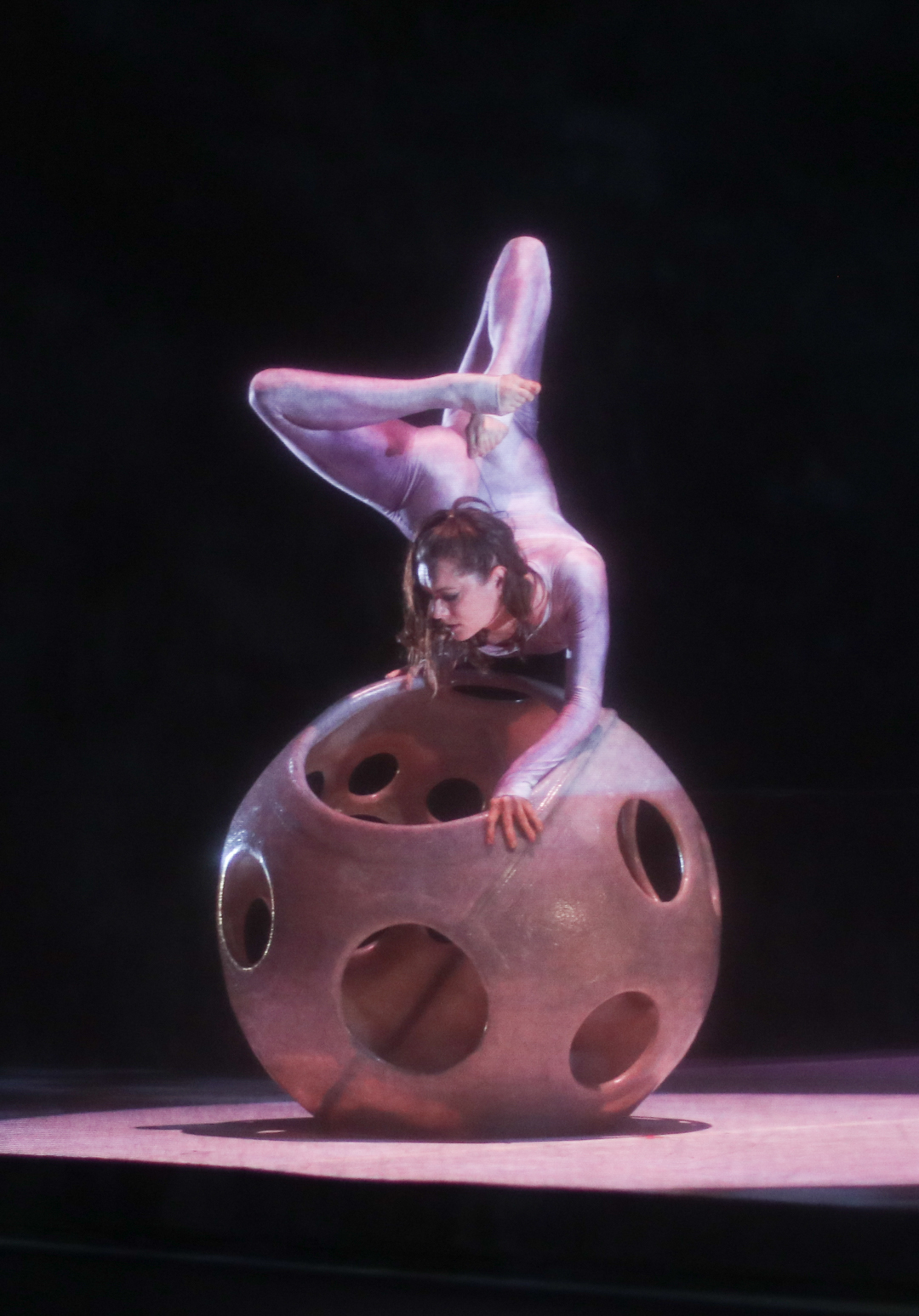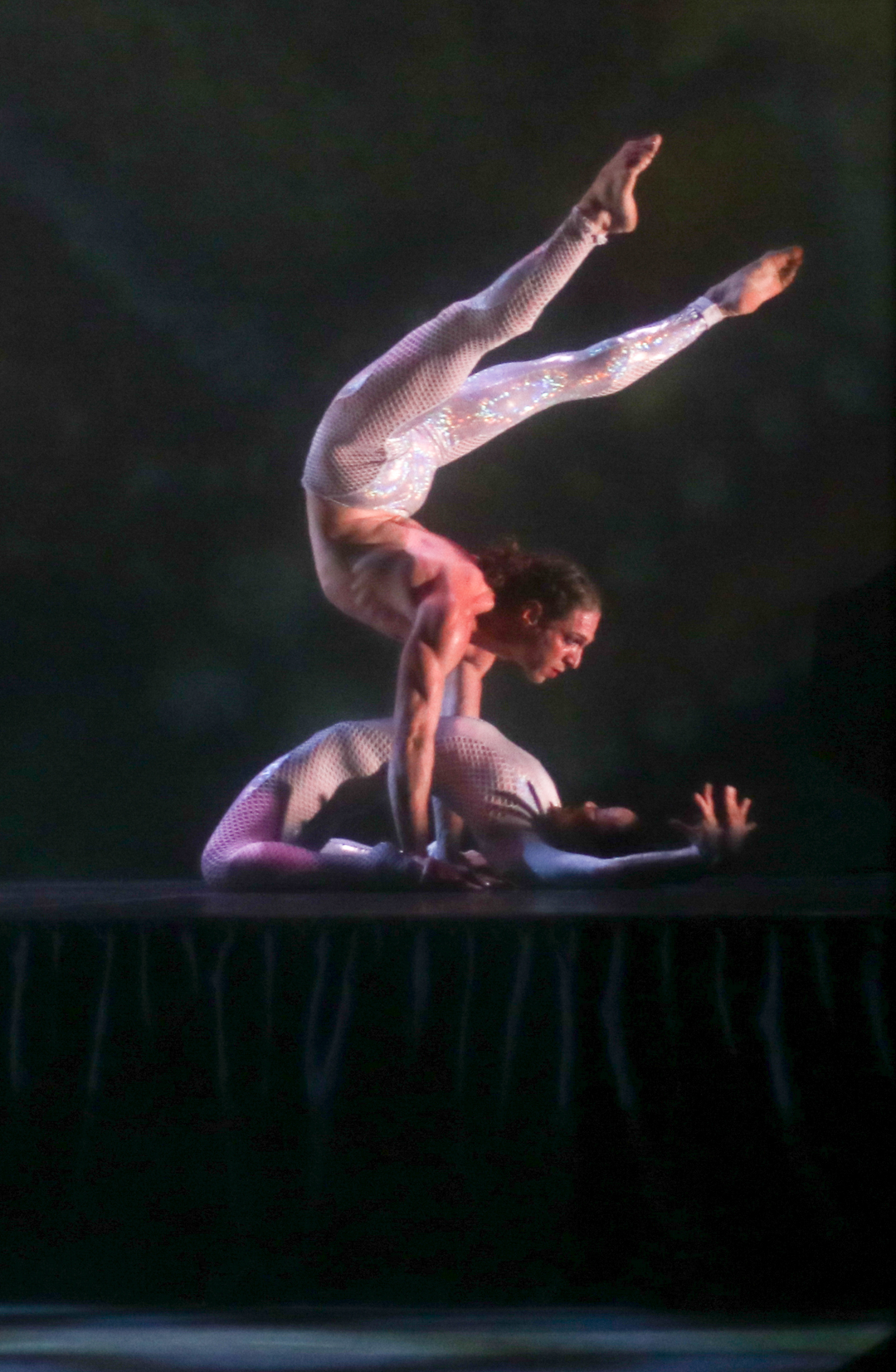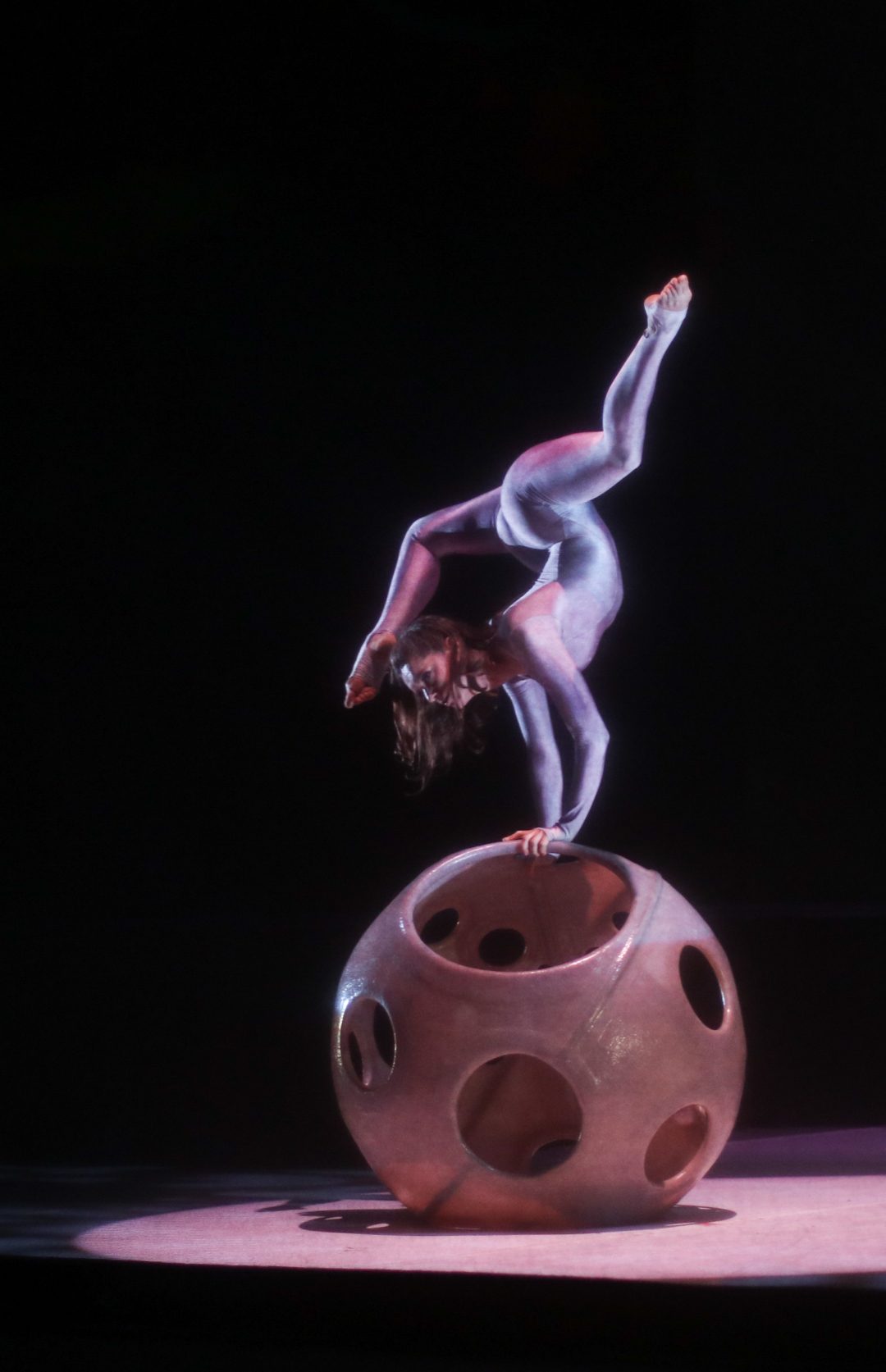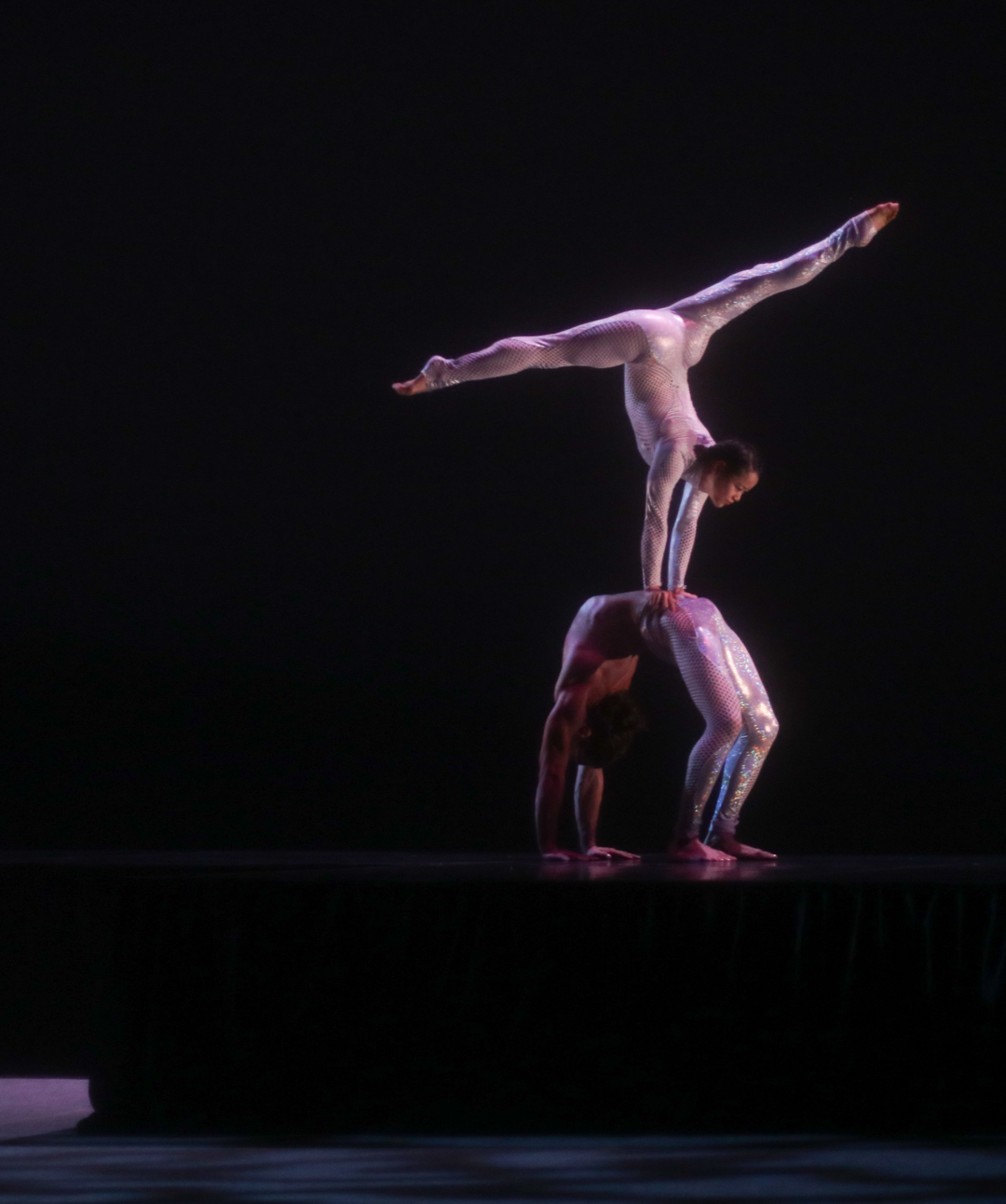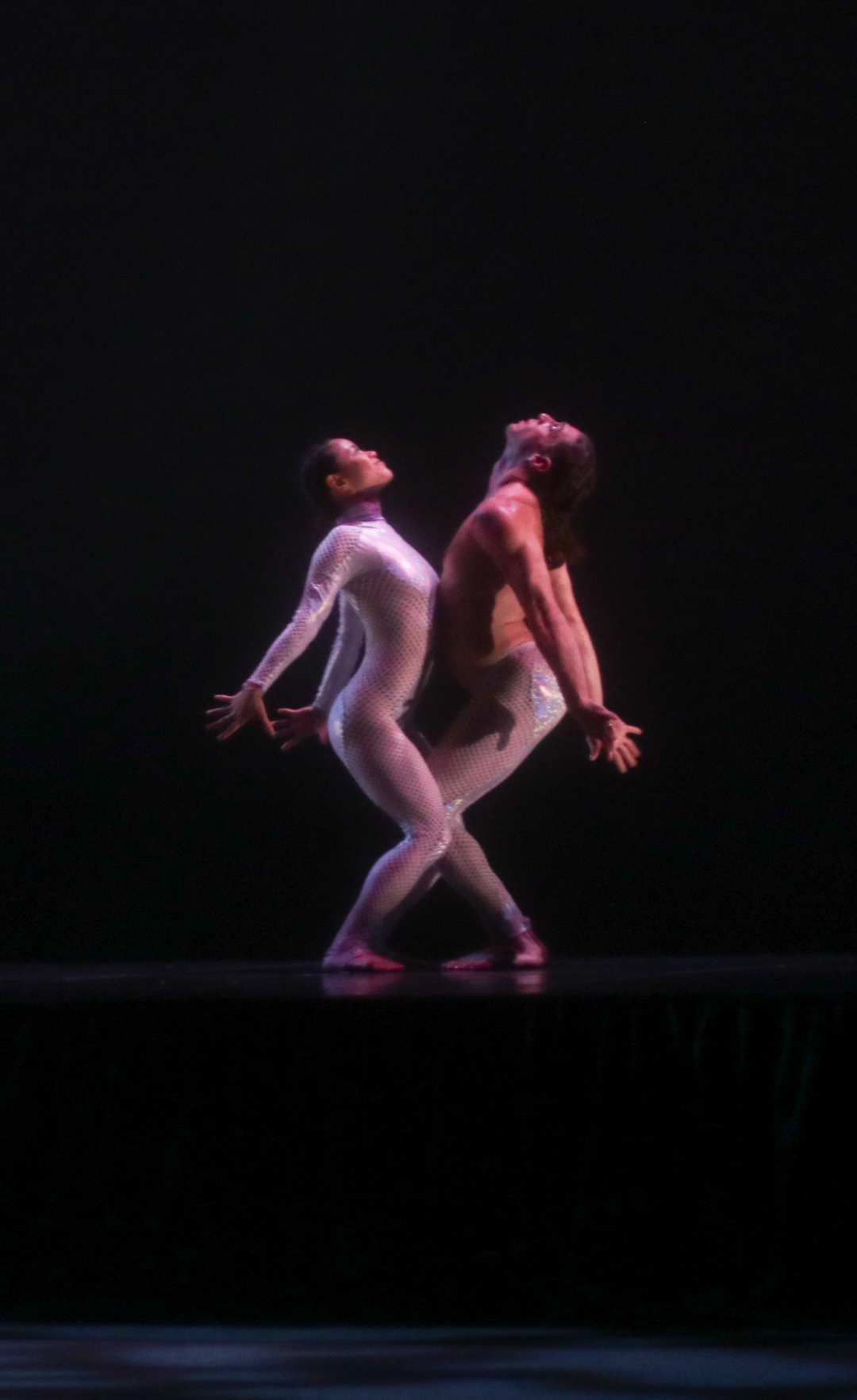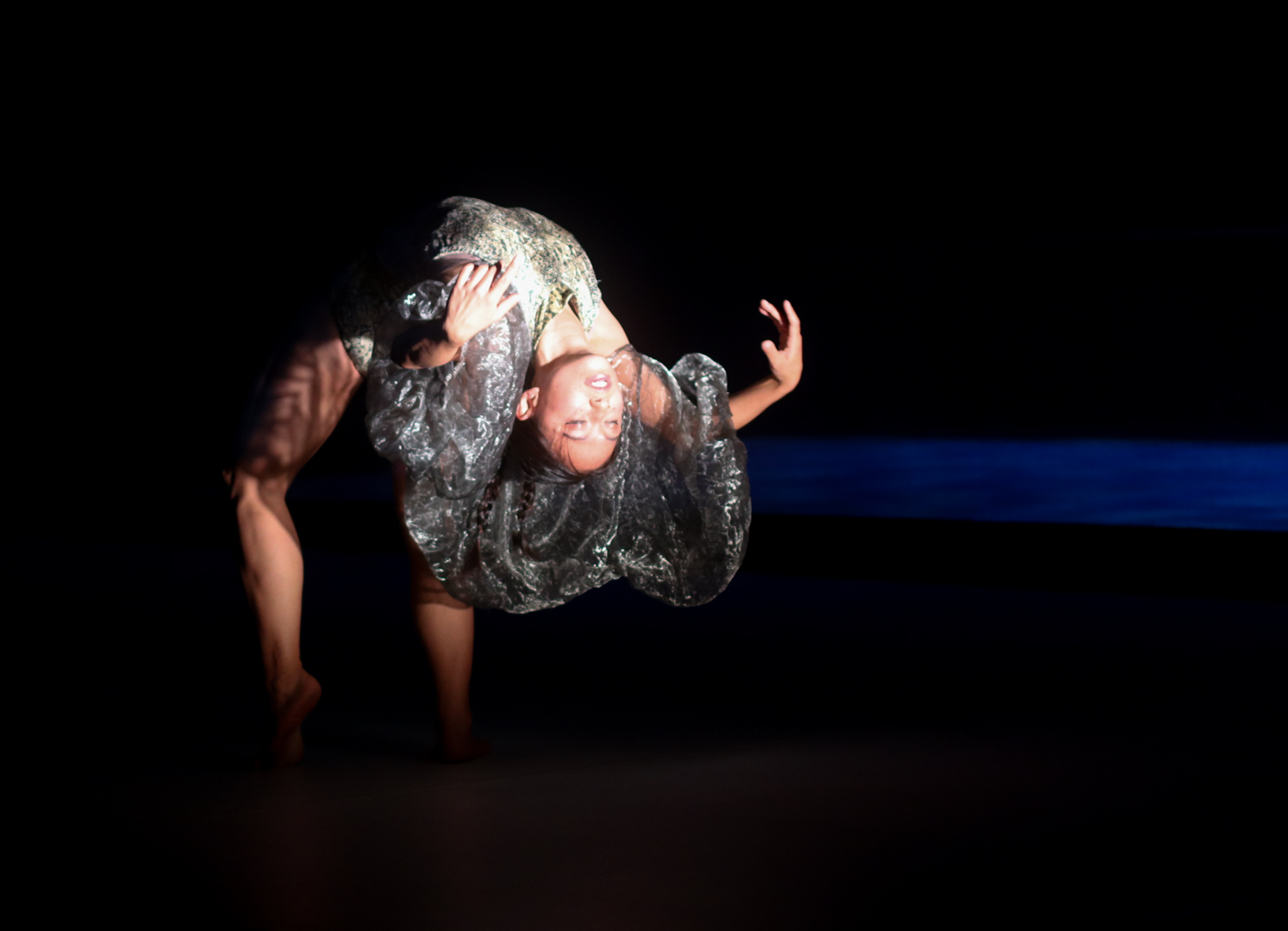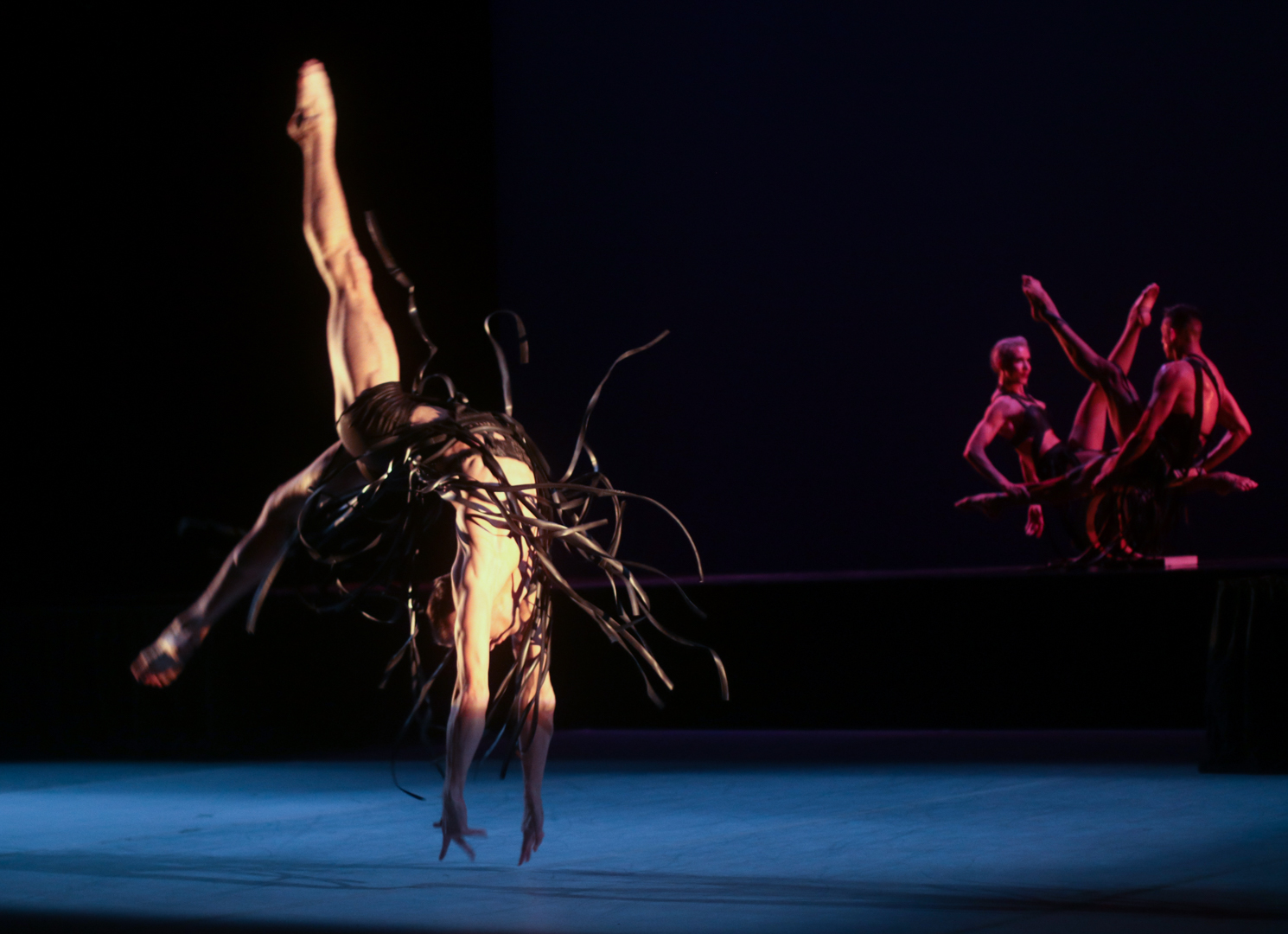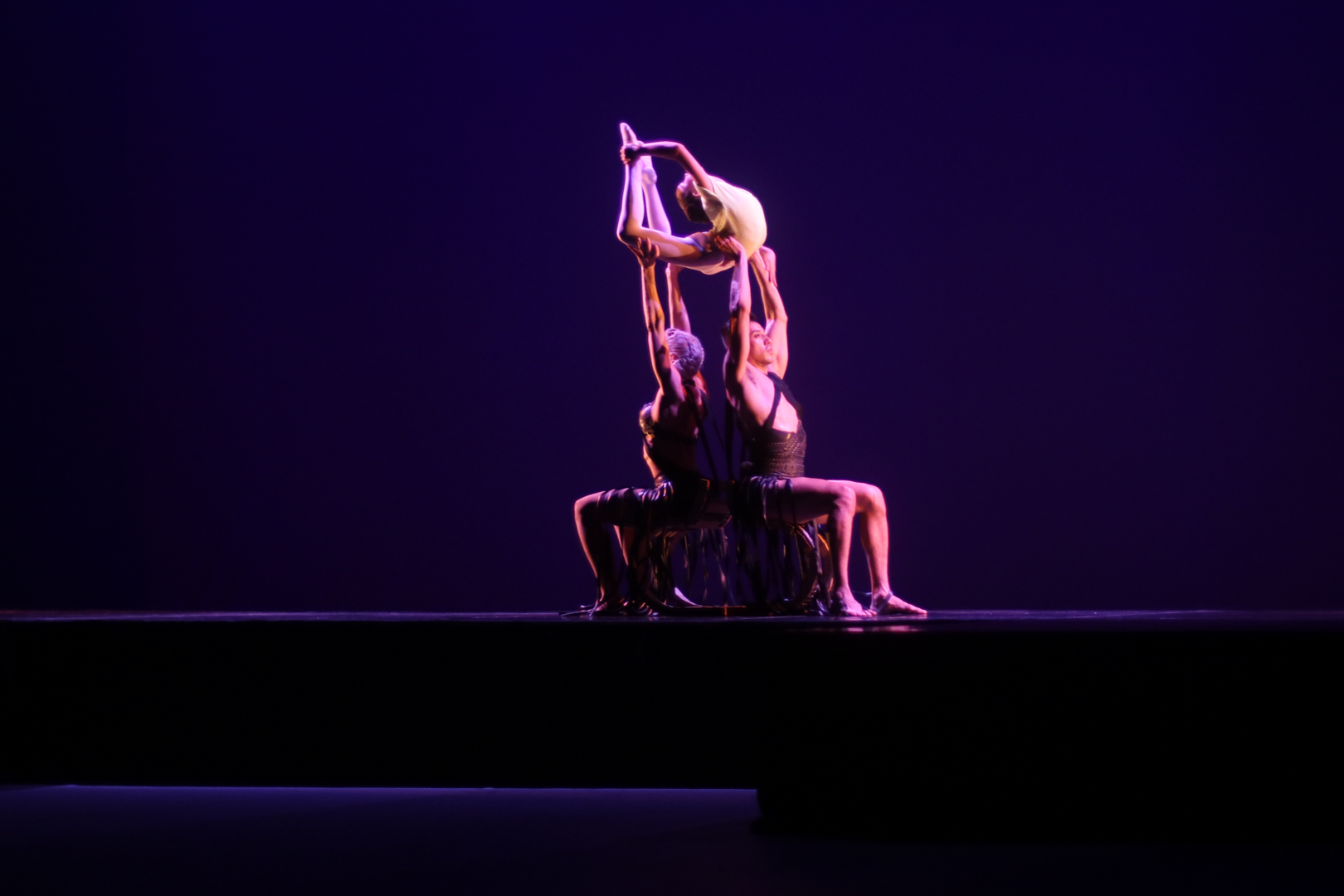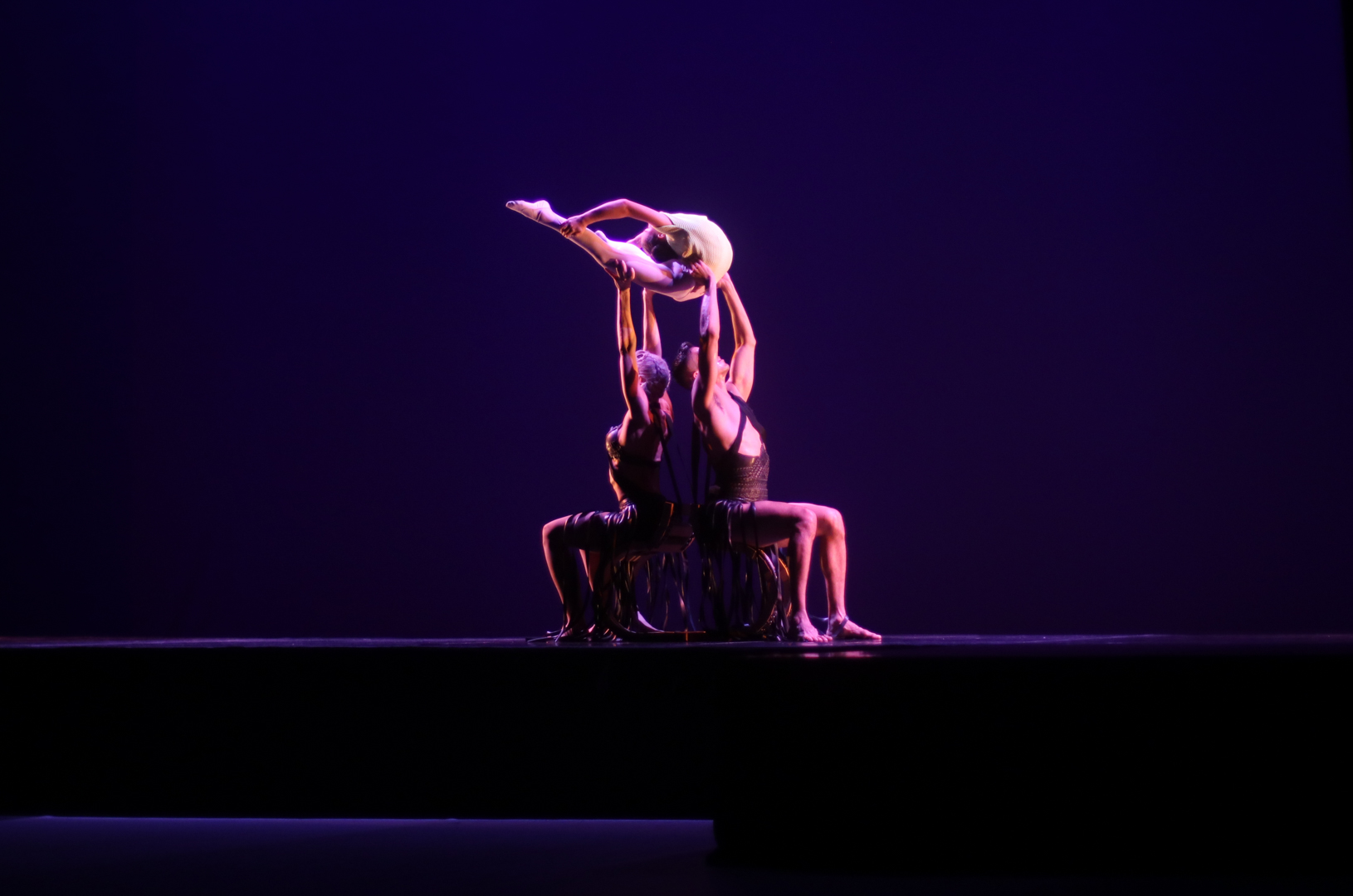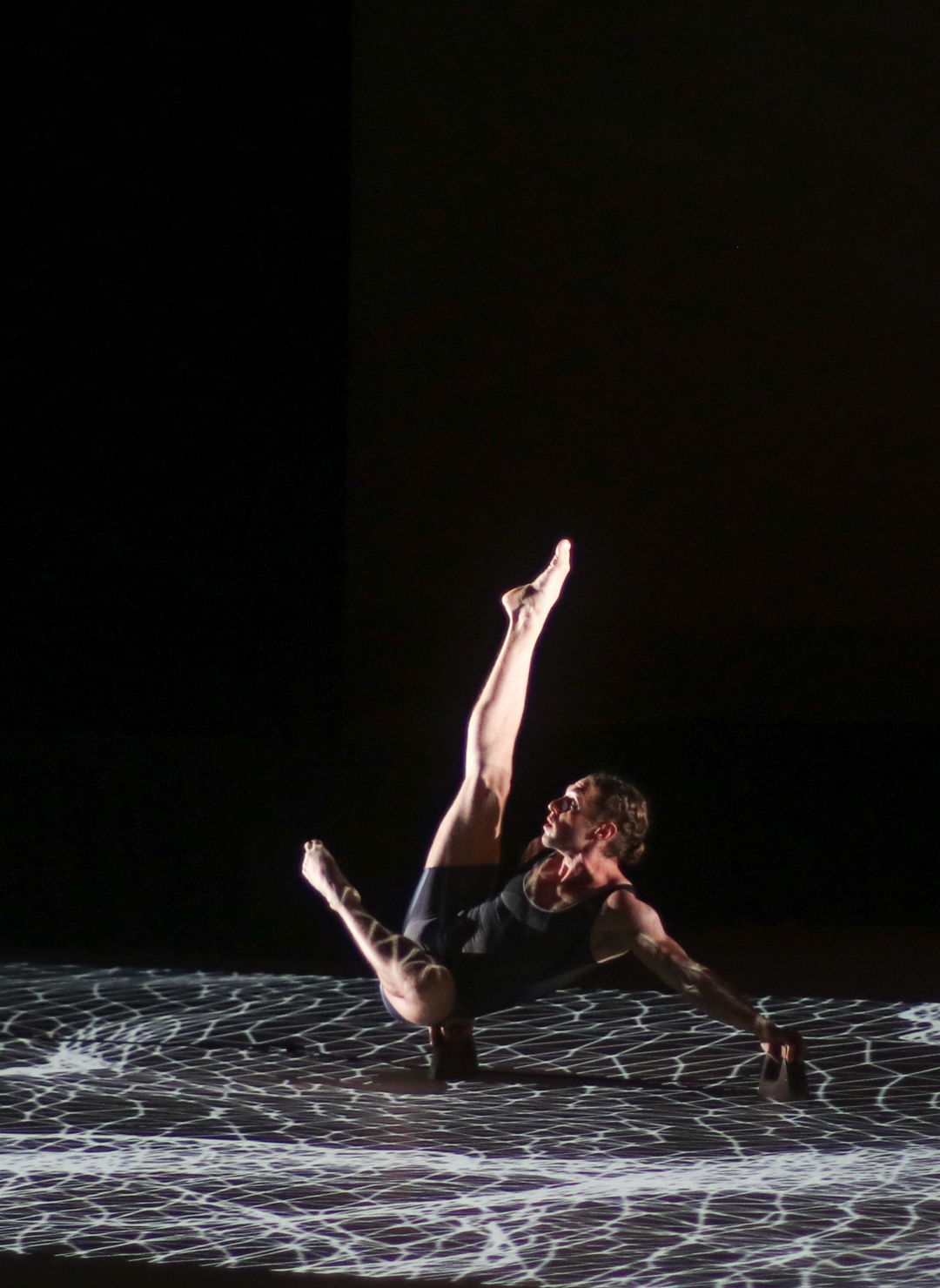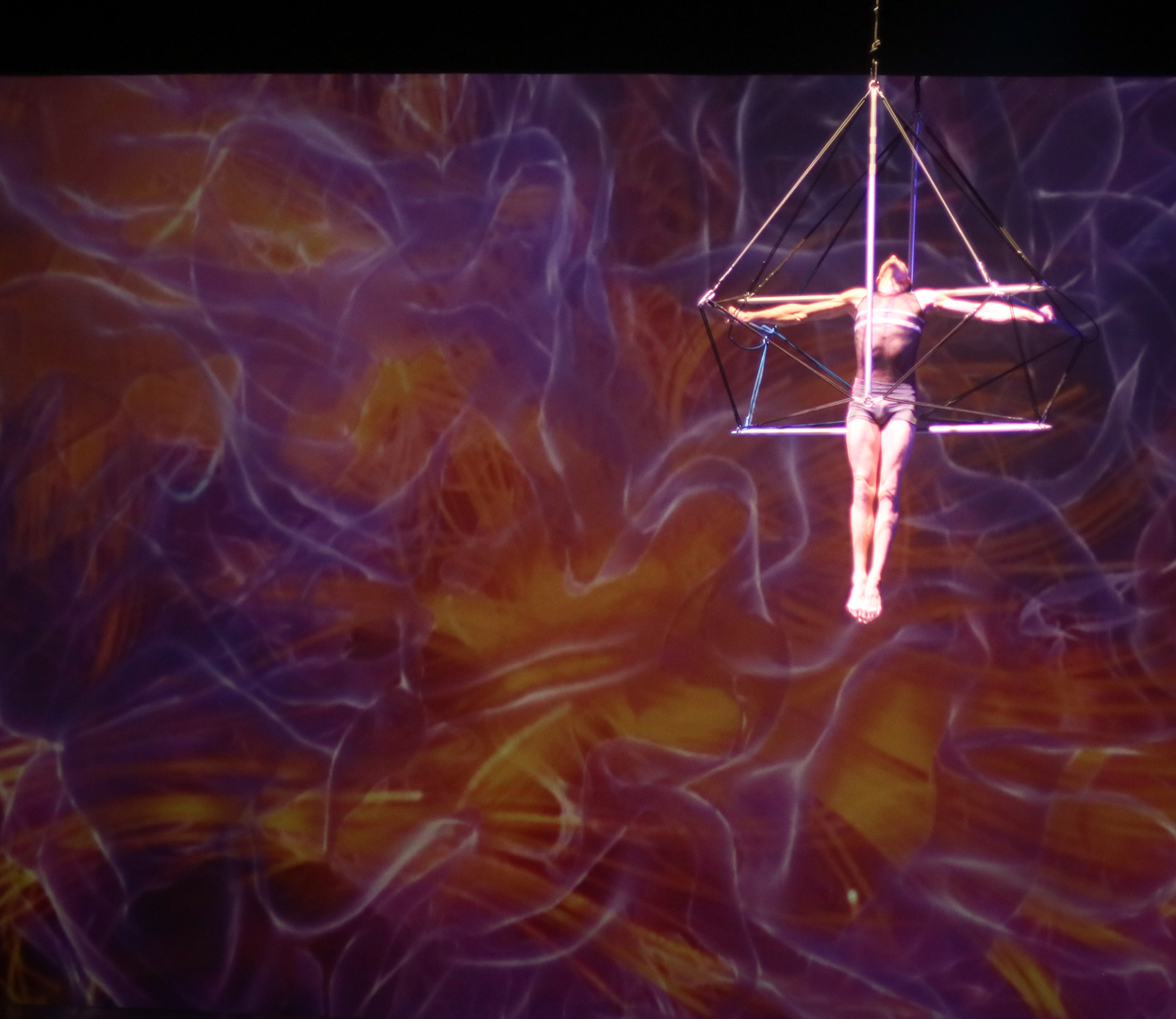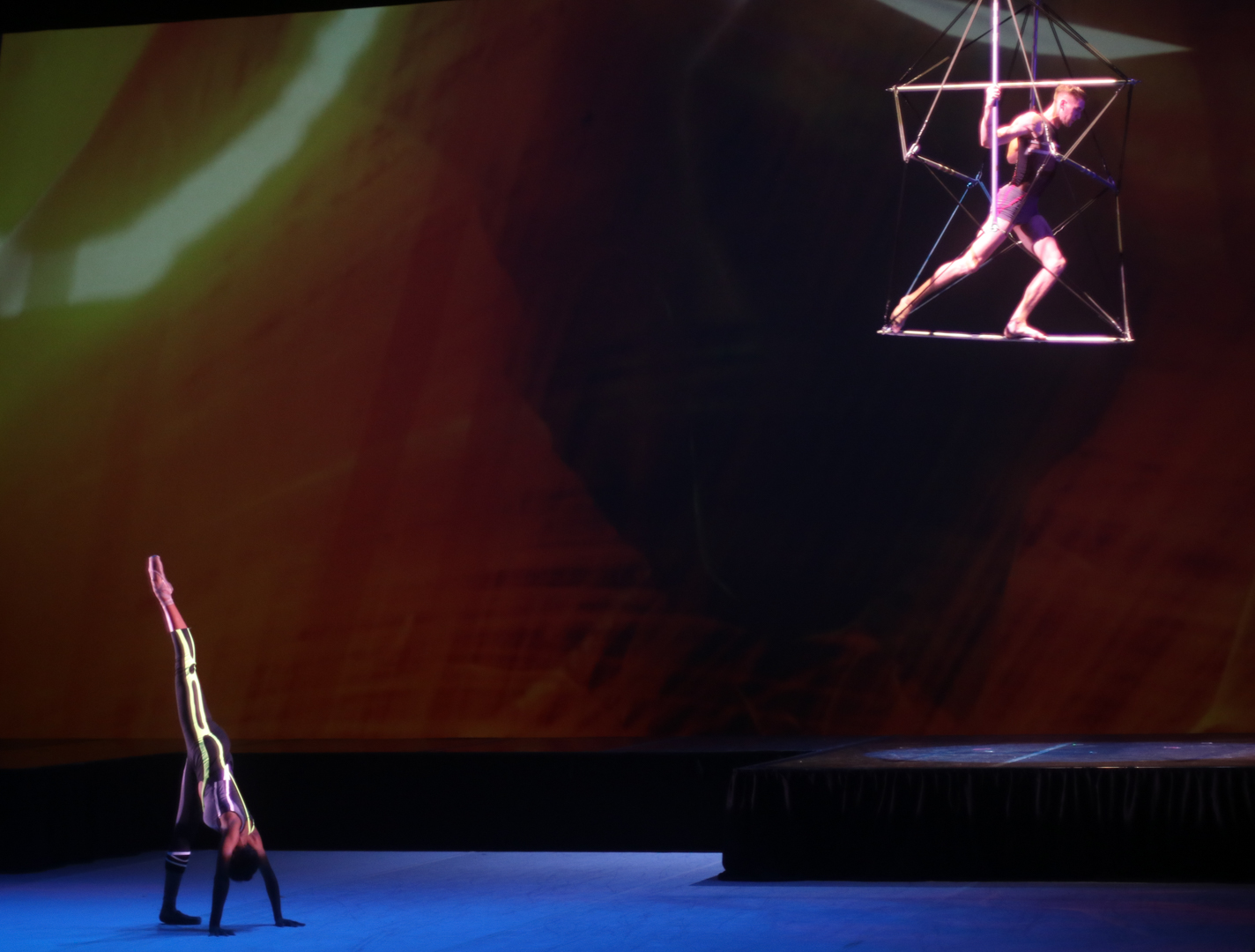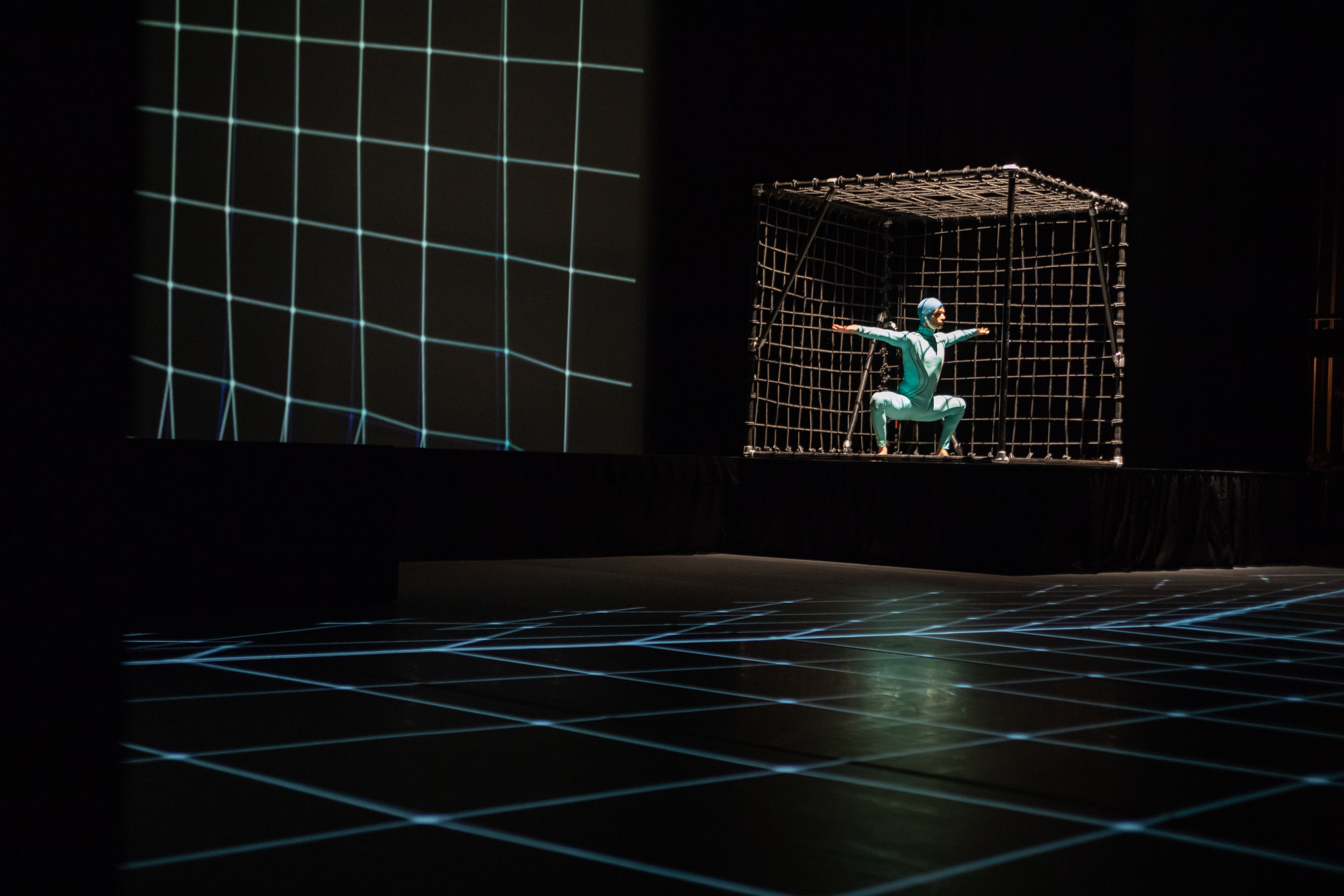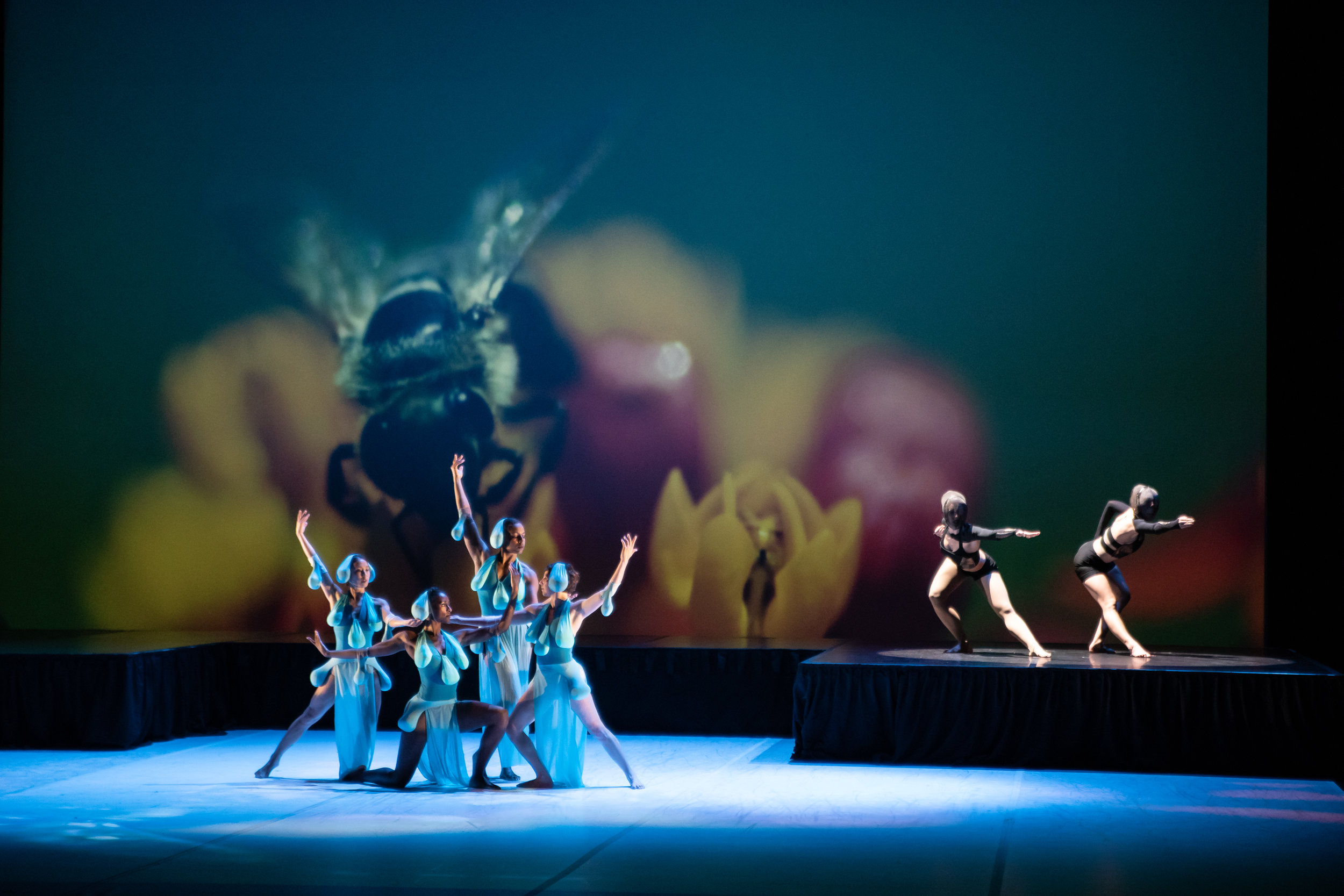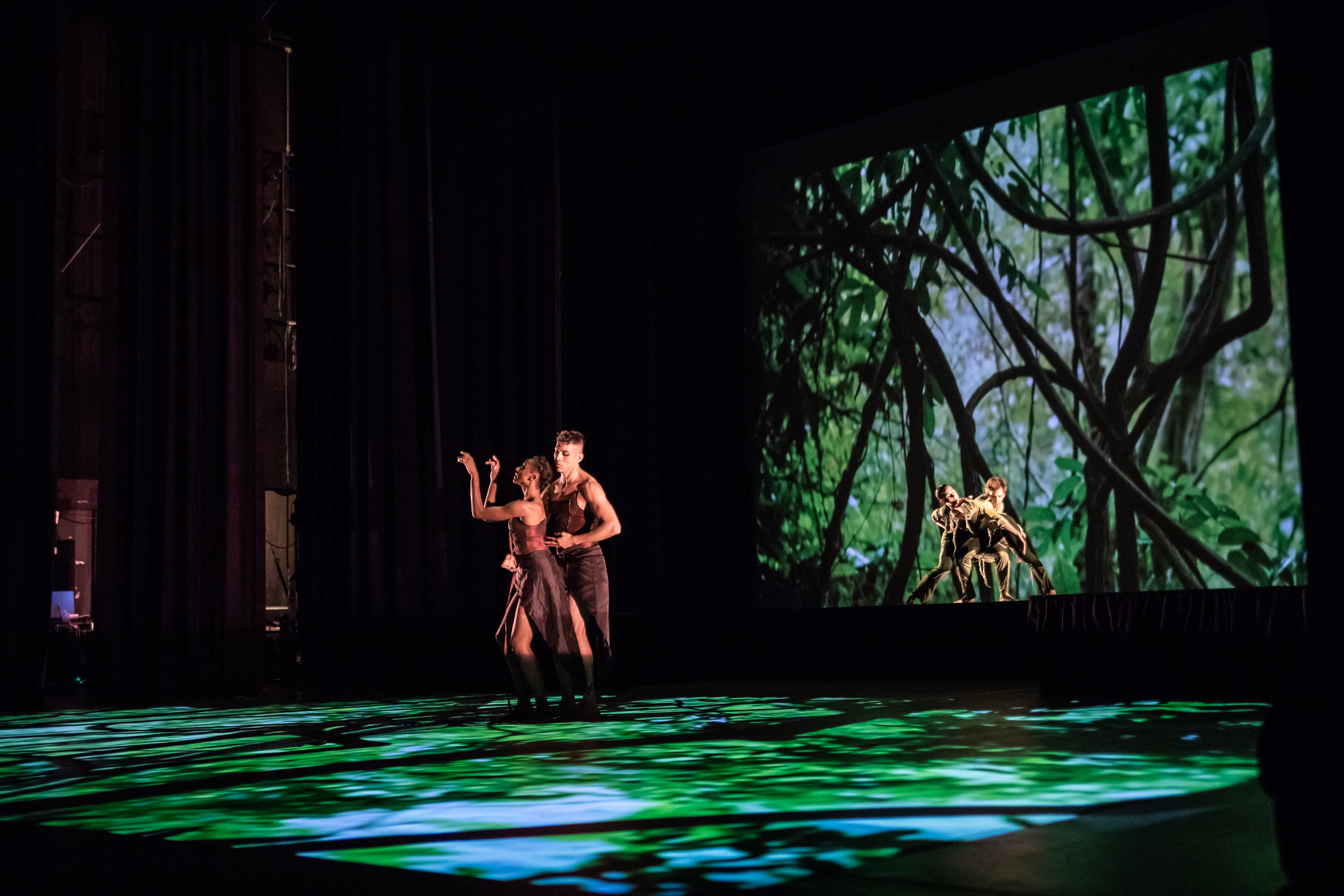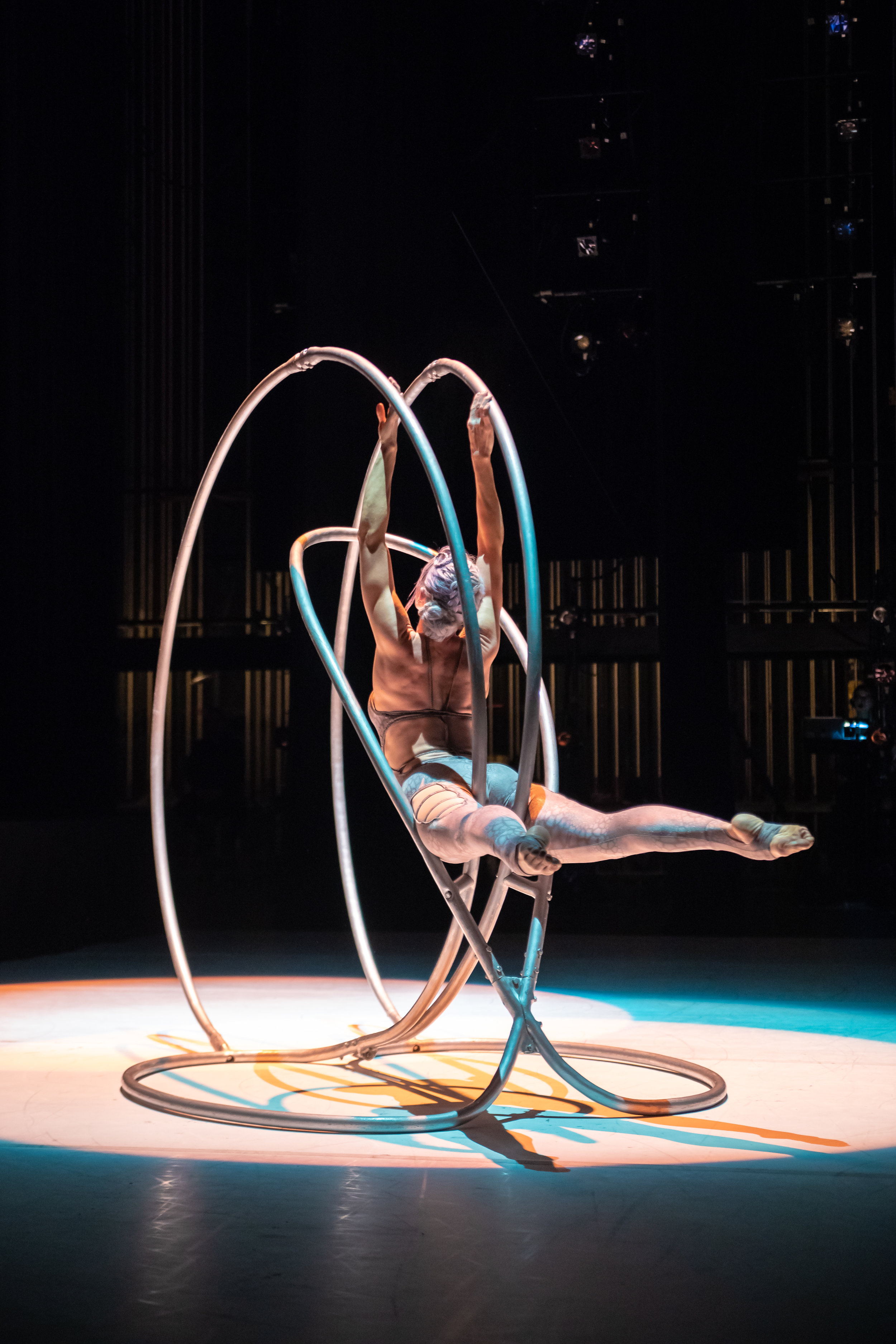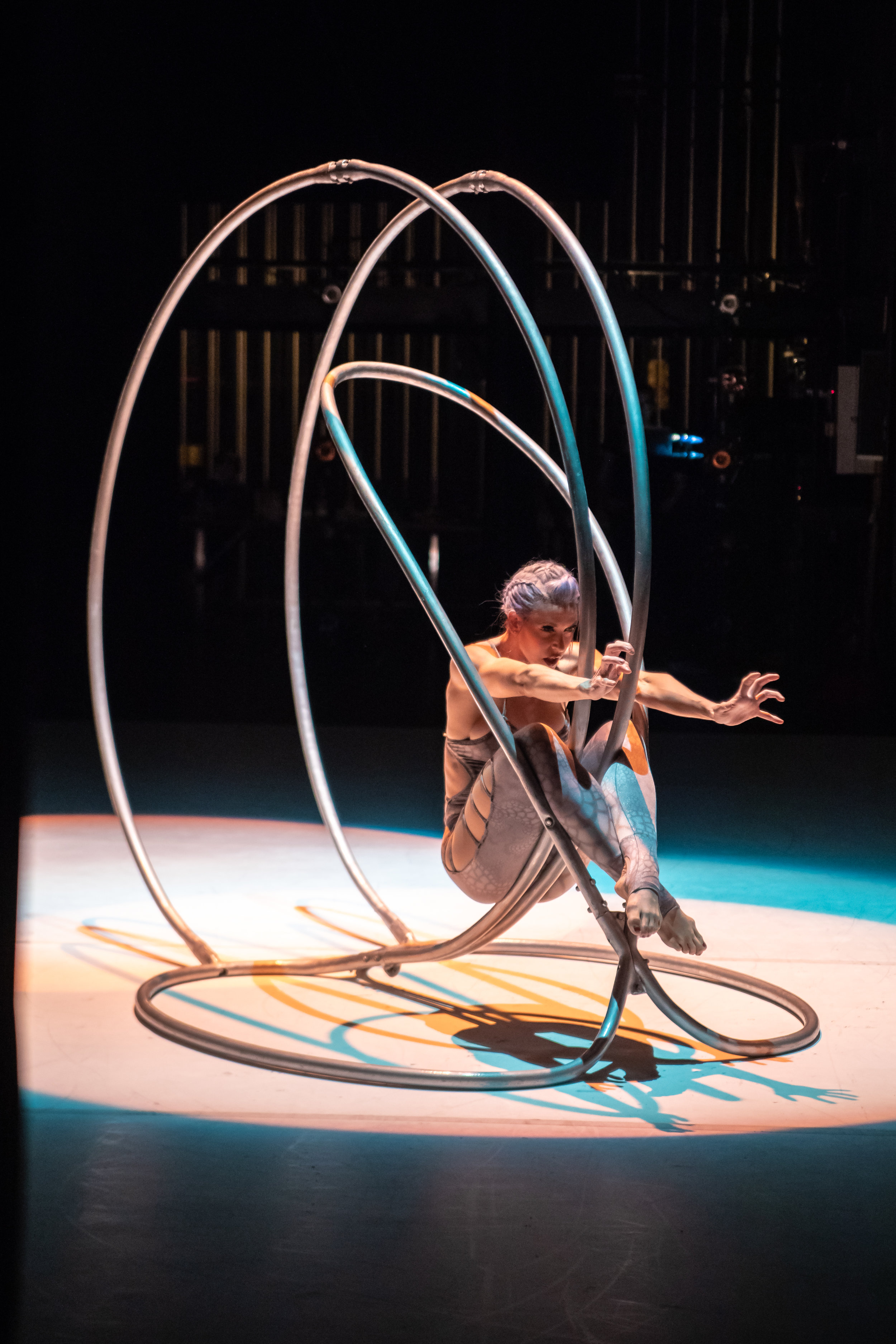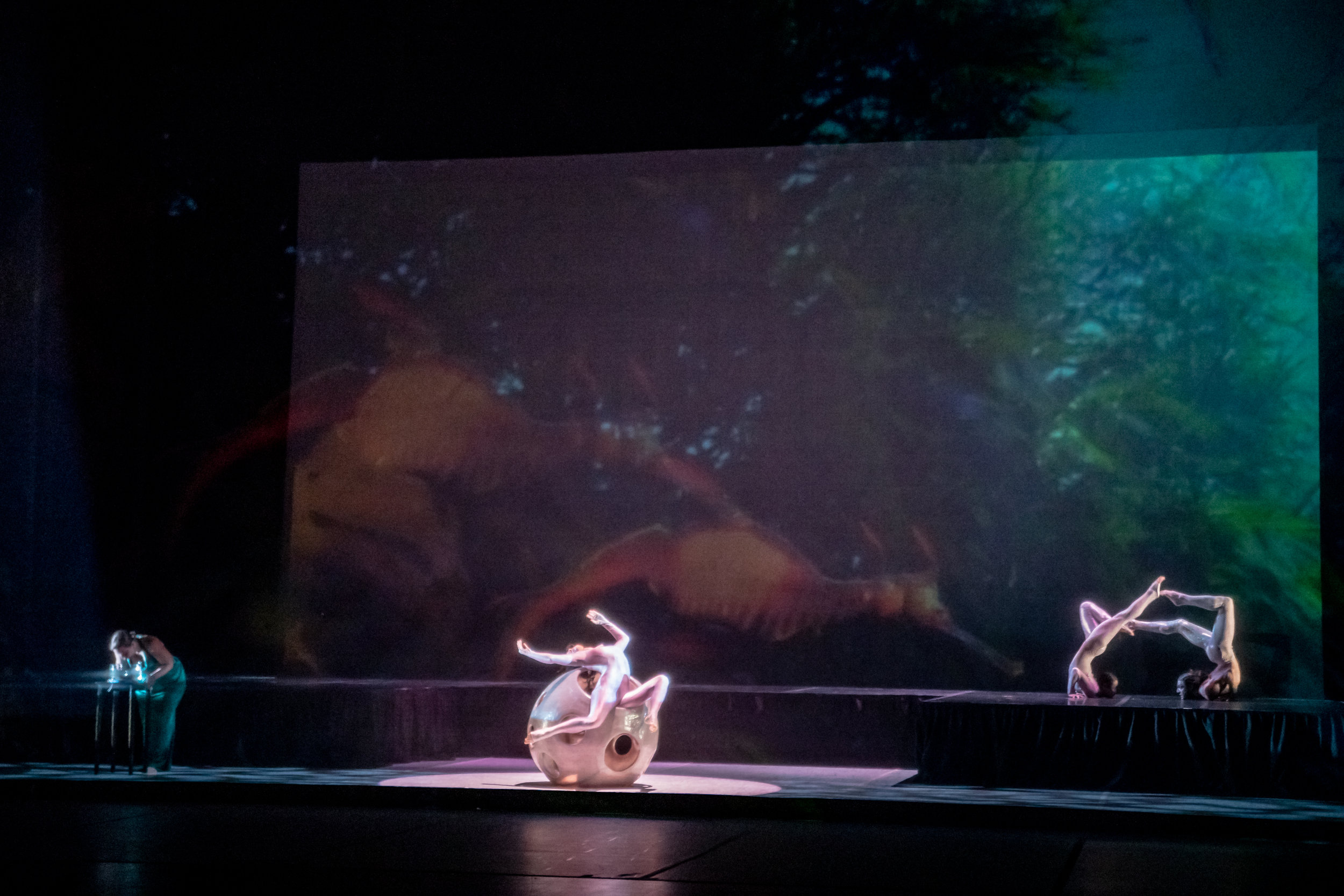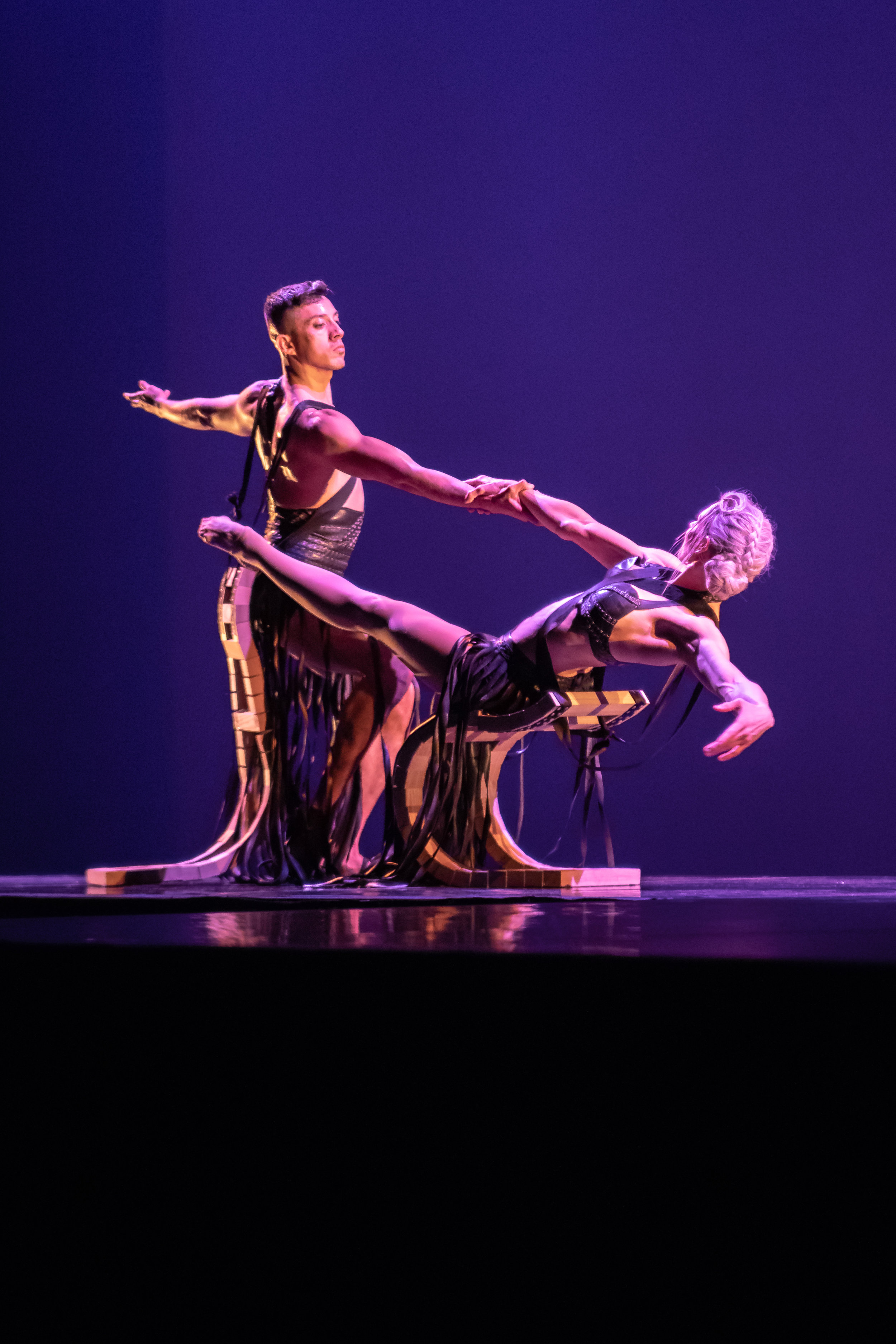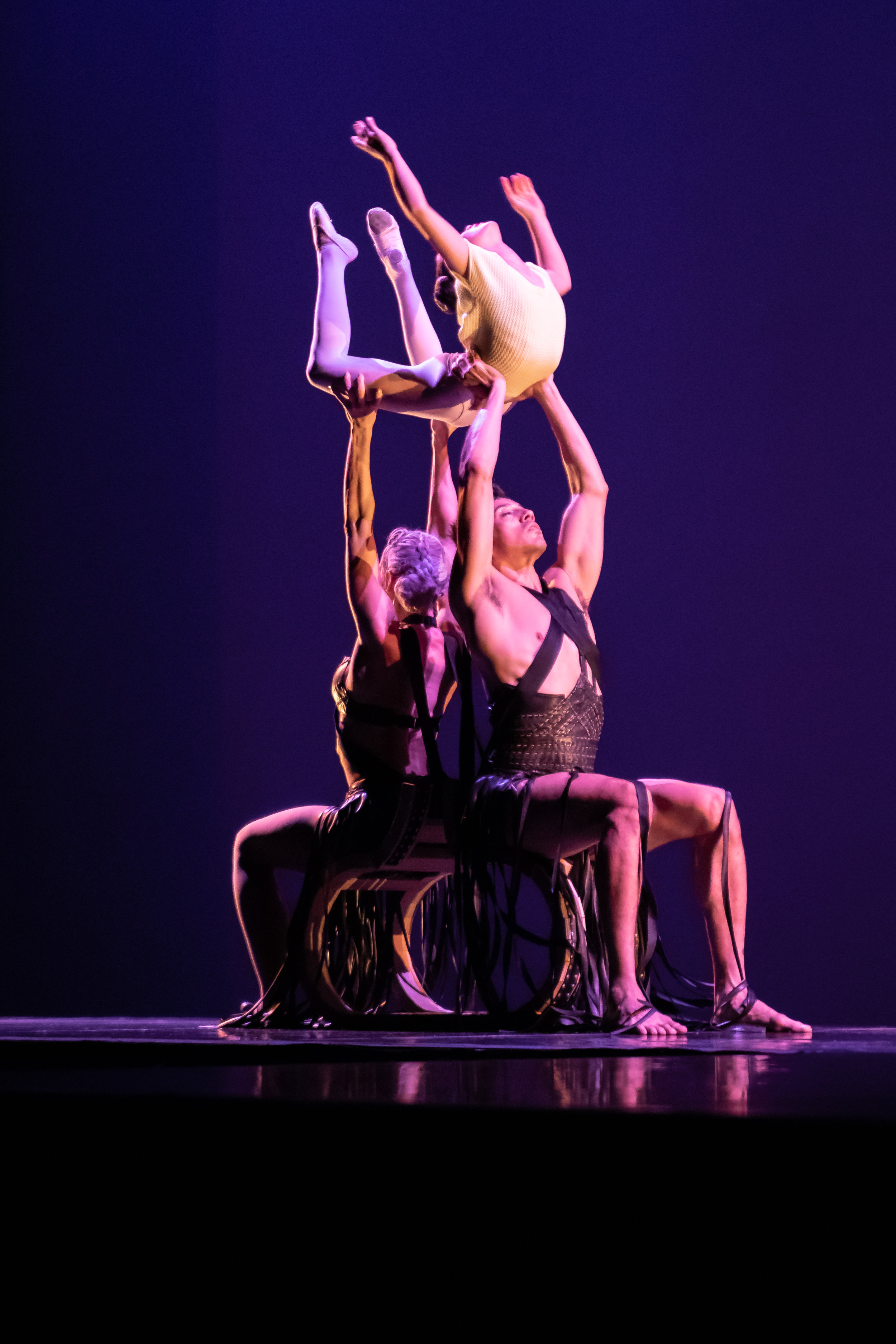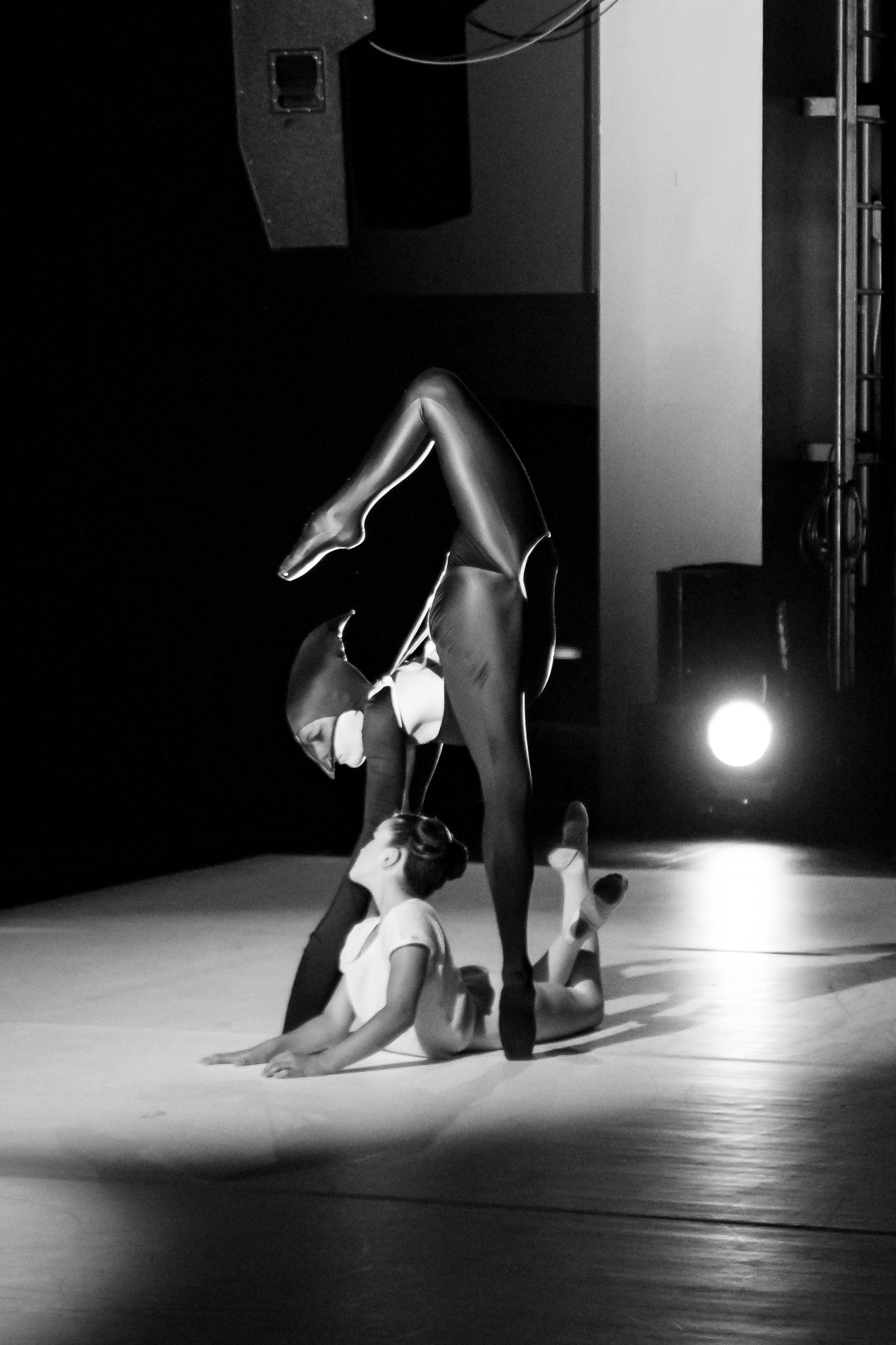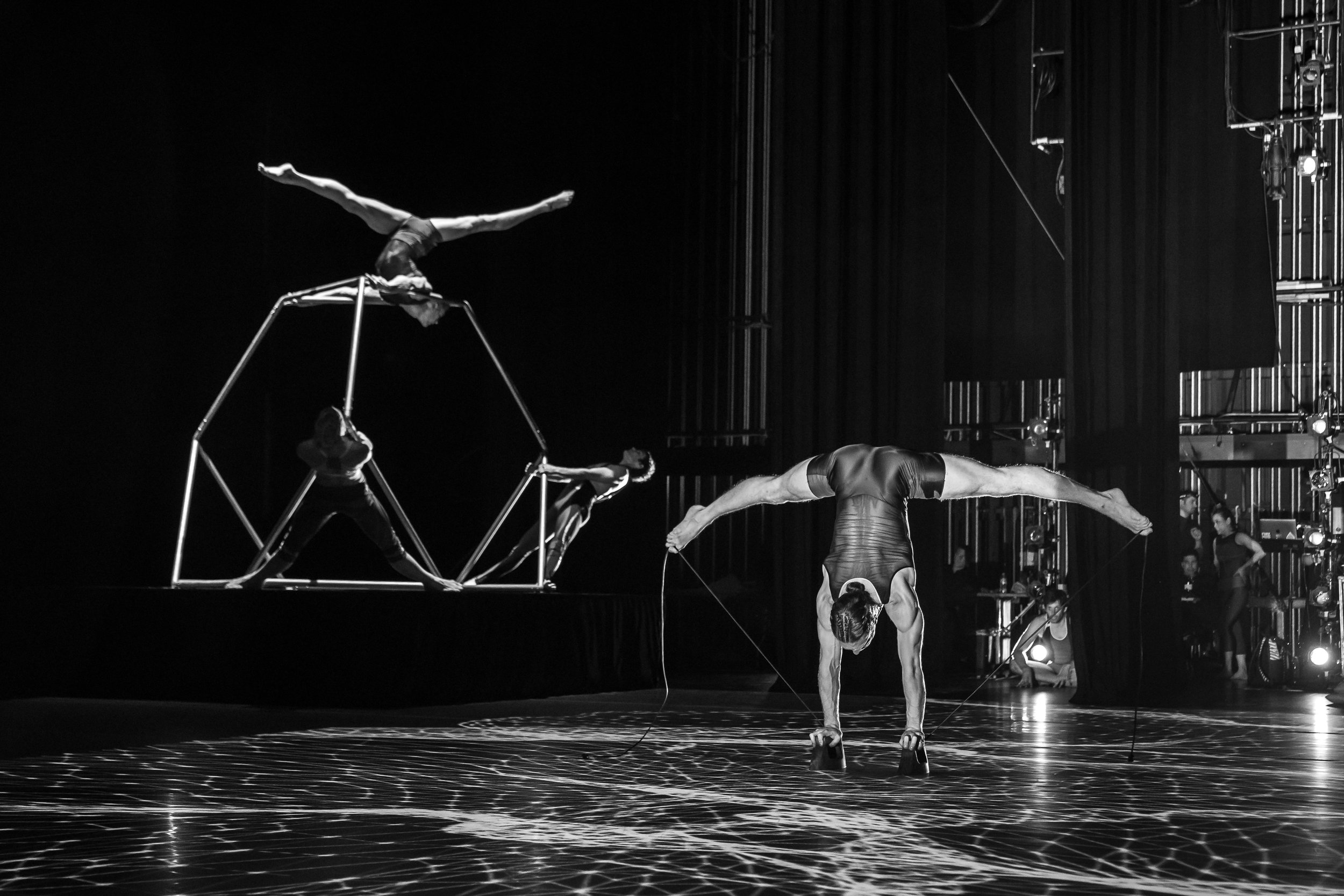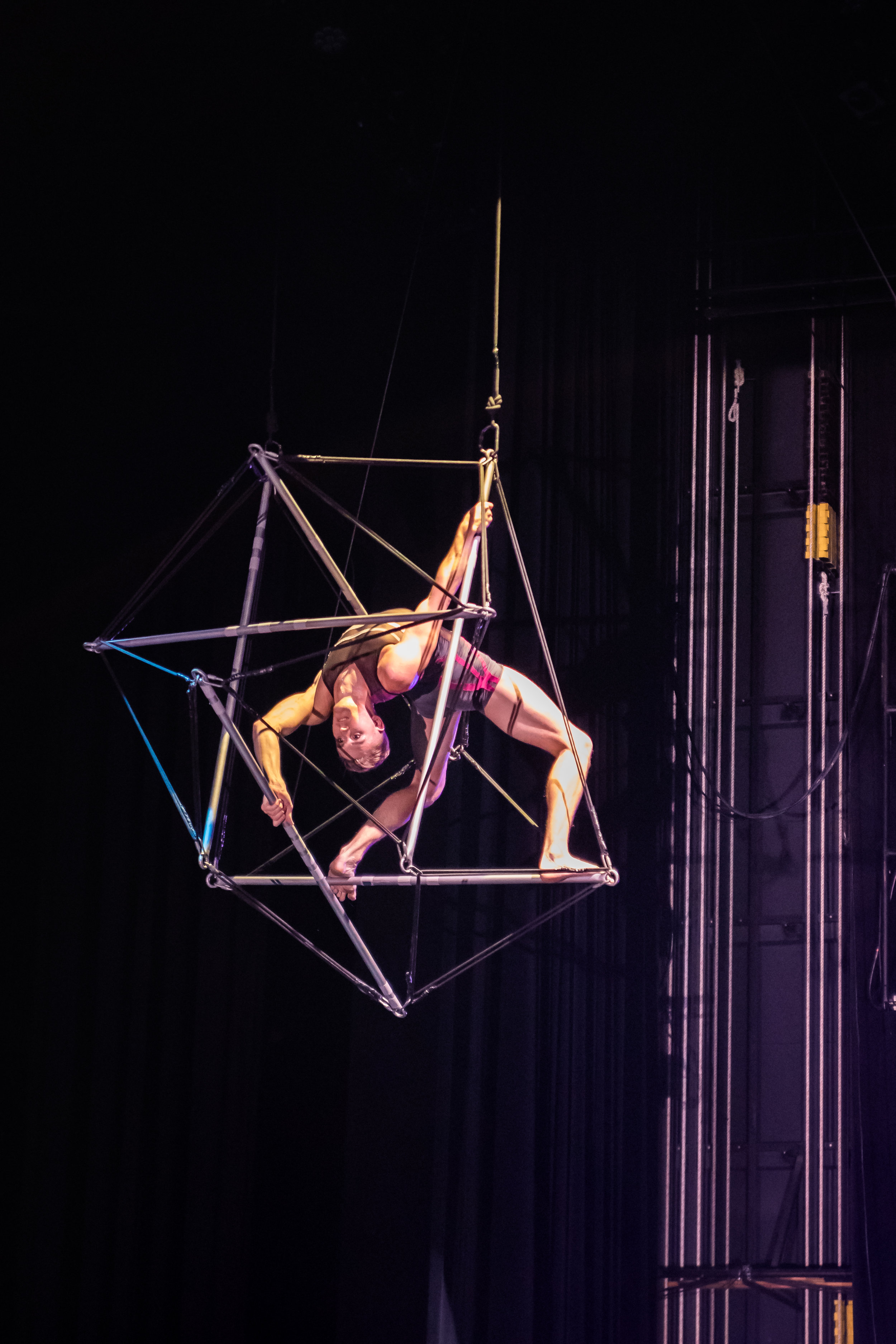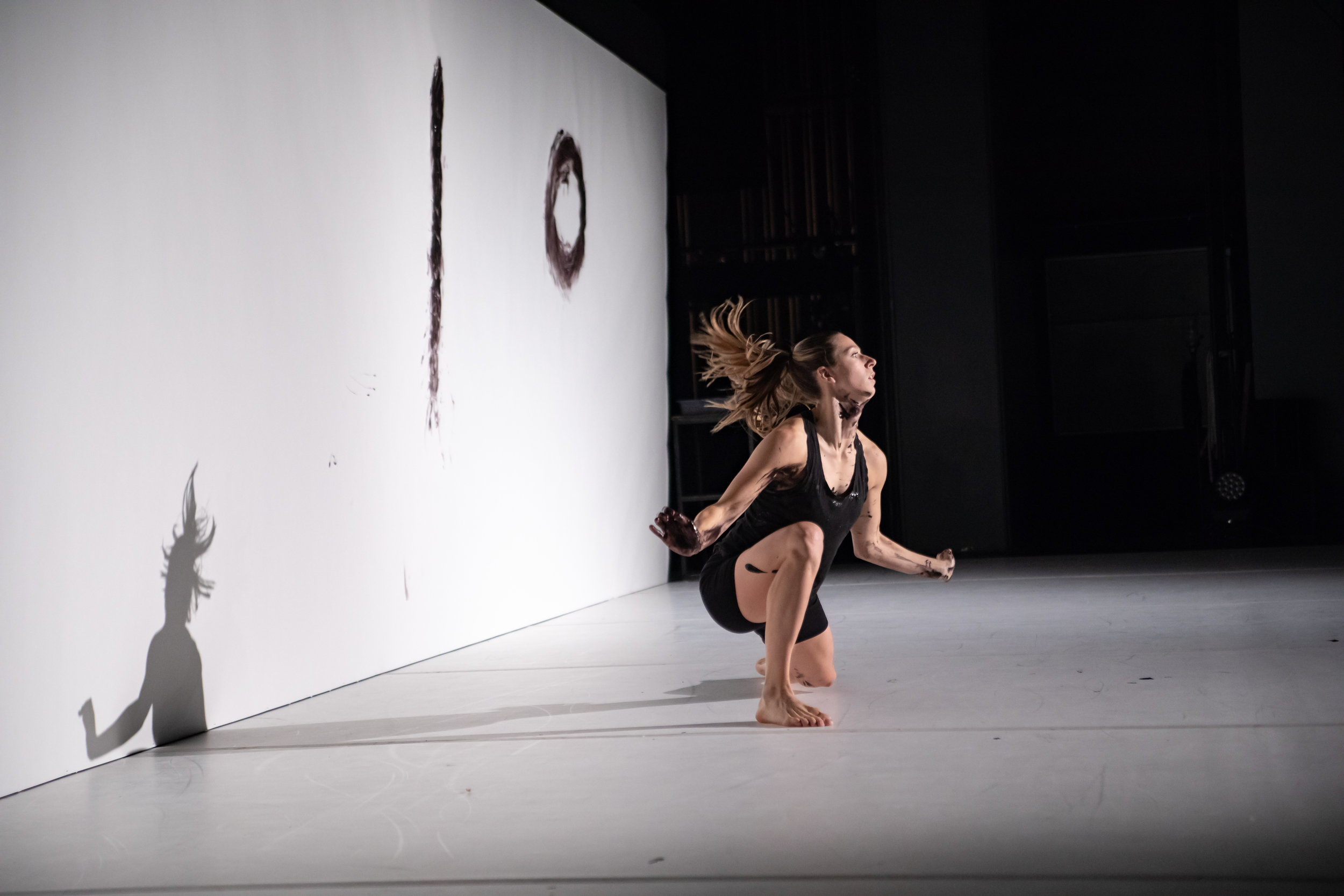LEFT TO HER OWN DEVICES - 20 Years of Sculpture in Motion (2018)
Celebrating the company’s twenty-year anniversary, Left to Her Own Devices: 20 years of Sculpture in Motion is a distillation of all of Capacitor’s work to date, focusing on physical structures—which have essentially been oppressive problems for the performers to overcome—to explore the theme of liberation.
“The first excerpt (from 2000’s Within Outer Spaces) was all about connection. Two dancers entered the space, wearing a rigging apparatus of bungee cords over their costumes. These flexible fibers joined their cores and torsos, like the bungee cords were an extension of the rib cage or the vertebrae. At first, they gently explored tension and suspension, slowly pulling away from each other, the cords stretching. As the duet continued, the intensity of movement and dynamics increased, but the connection remained steadfast and solid. A number of choreographic scenarios felt in play: the give and take of partnering, the importance of counterbalance, and the notion of distance. How far away can a dancer be from his/her partner while still maintaining connection? The connection continued in a subsequent scene, though now, two dancers were almost fused together. The pair navigated a Cunningham-inspired movement phrase in close quarters, their costume having a shared top. What happens to partnering and movement when there are imposed restrictions and spatial constraints?”
Photography by Eliya Selhub
“2005’s Digging in the Dark took a deep dive into the circle. An open orb hung from the rafters. Four performers engaged with the structure – climbing onto it, sitting as it spun, cycling through aerial choreography within its arcs and curves. At the same time, movement phrases unfolded on the stage in circular patterns. And the notion of the circle found its way into solo work with monologues of arched arms and turning sequences. Here, two iterations of the same shape were being simultaneously expressed and contrasted: a) suspended in the air and b) on a traditional surface. Act I closed with a revisiting of Biome (2007). An insect colony invaded the space, members fighting and devouring each other. The atmosphere was vicious and primal as the cast flattened each other on the ground, choked their colleagues’ necks and savagely attacked shoulders and other extremities. The Capacitor ensemble embodied nature’s ferocity with impressive (and frightening!) accuracy.”
“With acrobatics and aerial phrases set within three spiraled metal structures, Act II had a solid start. The movement may have been abstract but choreographic investigation was definitely underway in this excerpt from 2009’s The Perfect Flower. The metal structures had upended the idea of where the ground and floor were, and instead, posited a different sense of surface for the choreography. Rather than hindering physicality, this led to new movement possibilities, including many inverted positions. Several other moments stood out in the second half. Initially the costumes for 2016’s When We Were Small appeared to have long trains. I was completely surprised as these trains morphed into weight-bearing structures. Suddenly the dancers were seated on regal thrones, totally supported by their own costuming. I was also intrigued by a later scene from this same work where pointe shoes were worn on the feet and on the hands. It gave a distinctly insect quality to the choreography. And in Devices’ final excerpt from Synaptic Motion, a flexible, three-dimensional polyhedron was lowered from the ceiling, which a soloist ascended like a trapeze. The structure expanded and folded as he stretched and contracted, like he and the shape had become one.
...The physical feats were absolutely astounding. And the Capacitor artists weren’t just doing tricks. There was ample attention paid to the transitional pathways (how they got into the various positions).”

